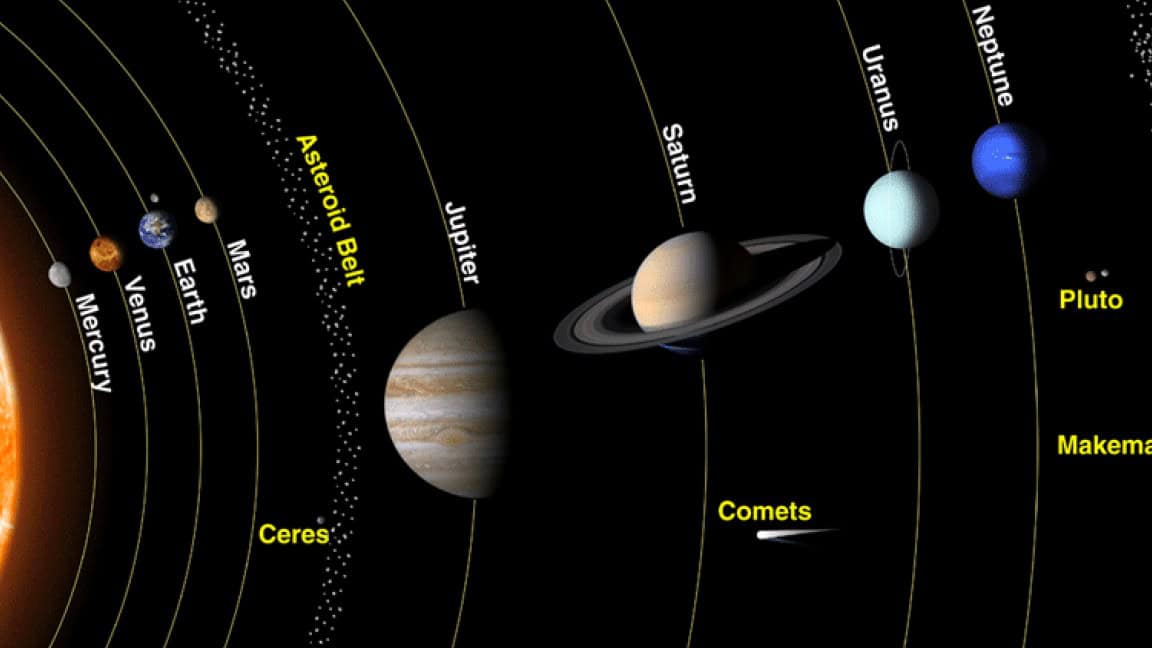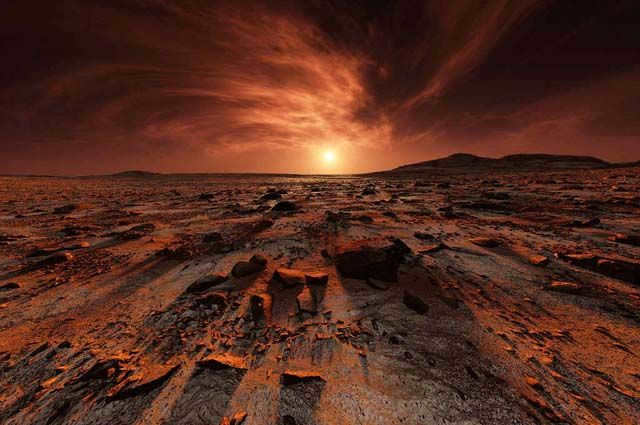
Education
Originally formed 4.5 billion years ago, the solar system consists of eight planets with different sizes and distances from the Sun. Some scientists have speculated that there may have been a ninth planet in the past, which is either beyond the reach of current observation methods or was destroyed due to natural or other causes. The primary evidence for this theory is based solely on mathematical calculations, therefore the traditional model of the solar system recognizes the existence of only eight planets.
Pluto used to be considered a planet, but it was later reclassified and no longer included in the official list.
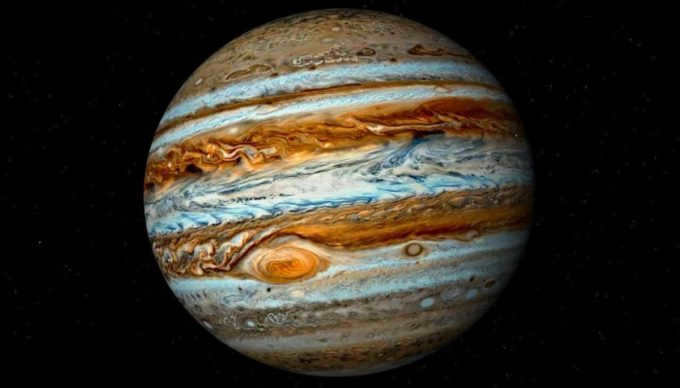
Jupiter, the largest planet in our Solar System, is a colossal gas giant with a mass that is 318 times greater than that of Earth, amounting to a whopping 1.8986-10 27 kg. This immense planet boasts an equatorial radius of 71.4 thousand km, which is an astonishing 11.2 times larger than Earth’s radius. One fascinating aspect of Jupiter is that it weighs 2.47 times more than the combined mass of all the other planets in the Solar System, yet it is nearly 1000 times lighter than the mighty Sun. Jupiter is known for its turbulent storms and tempests, and scientists have even observed lightning and auroras on its surface. With a total of 69 satellites, Jupiter has an impressive array of moons, and there may be even more waiting to be discovered. The majority of our knowledge about this magnificent planet has been obtained through extensive telescope observations, and to date, eight spacecraft have had the privilege of journeying to Jupiter. It was the brilliant Galileo Galilei who first discovered Jupiter’s satellites in 1610.
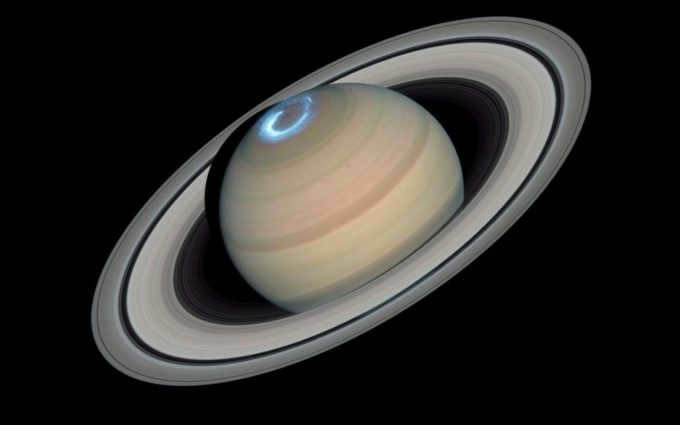
Saturn, the sixth planet from the Sun, is the second largest planet in our solar system. It has a mass that is 95 times greater than Earth’s, totaling 5.6846-10 26 kg. With an equatorial radius of 60.3 thousand kilometers, Saturn is classified as a gas giant and is composed mainly of hydrogen. The planet’s surface is known for its high-speed winds, which can reach speeds of up to 1800 km/h. Astronomers have discovered a total of 62 satellites orbiting Saturn, with its largest satellite, Titan, ranking as the second largest satellite in the entire solar system. Saturn also boasts a magnificent system of rings made up of ice particles and heavy compound dust. The planet was extensively studied by the AMS Cassini spacecraft, which successfully entered Saturn’s orbit after a seven-year journey. The research conducted by the Cassini mission spanned over a remarkable 13-year period.
3. Uranus
The third planet in our solar system is Uranus. Uranus is a unique planet because it rotates on its side, making it different from any other planet in our solar system. Its blue color comes from the methane gas in its atmosphere. Uranus also has a system of rings, although they are not as prominent as the rings of Saturn. Uranus has 27 known moons, the largest of which is named Titania. It was discovered in 1781 by the astronomer William Herschel. Uranus is a fascinating planet that continues to intrigue scientists and astronomers alike.
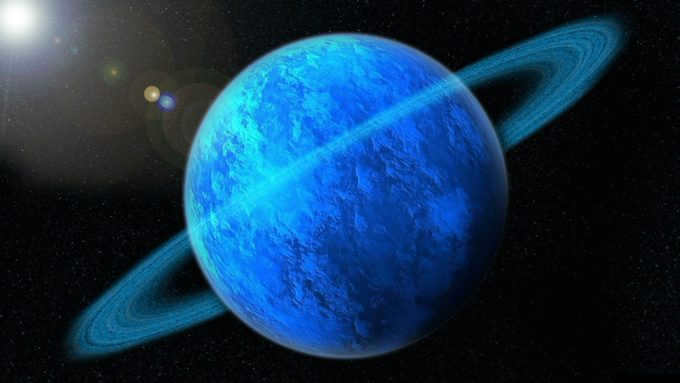
Uranus, the third largest planet, is ranked as the fourth largest in terms of mass and the seventh farthest from the Sun. This celestial body was first discovered in 1781. With an equatorial radius of 25.5 thousand kilometers and a mass of 8.6832-10 25 kg, Uranus is 14 times the mass of Earth. It is classified as a gas giant, but what makes it truly unique is its internal structure, which hides massive reserves of ice. The surface temperature on this planet can drop as low as -224 °C. Additionally, Uranus boasts a total of 27 satellites, a ring system, and a magnetosphere. The American Voyager 2 spacecraft made it possible to conduct a comprehensive study of Uranus, capturing and transmitting images of the planet back to Earth. Thanks to this mission, researchers were able to observe and analyze seasonal changes and weather activity occurring on Uranus’s surface.
4. Neptune
Neptune, the eighth planet from the Sun, is an intriguing celestial body. It is unique in many ways and has captured the curiosity of scientists and astronomers for centuries. With its stunning blue color and mysterious atmosphere, Neptune stands out in our solar system.
Neptune is the fourth-largest planet in terms of diameter and the third-largest in terms of mass. It is known for its strong winds, which can reach speeds of up to 1,500 miles per hour. These winds create incredible storms, including the famous Great Dark Spot, which was observed by the Voyager 2 spacecraft in 1989.
One of the most fascinating aspects of Neptune is its composition. It is primarily composed of hydrogen and helium, similar to the gas giants Jupiter and Saturn. However, Neptune also contains a significant amount of “ices,” such as water, ammonia, and methane. These ices give the planet its vibrant blue color and contribute to its unique atmosphere.
Neptune has a complex weather system, with distinct cloud layers and storms. Its atmosphere is made up of hydrogen, helium, and traces of other compounds. The upper atmosphere features clouds made of methane ice crystals, which give the planet its blue color. Deeper in the atmosphere, there are clouds of ammonia and hydrogen sulfide.
The temperature on Neptune can reach incredibly low levels, as low as -360 degrees Fahrenheit (-218 degrees Celsius). The planet also experiences extreme weather conditions, with storms that can last for years. One such storm, called the Great Dark Spot, lasted for several years before dissipating.
Another interesting feature of Neptune is its moon system. The planet has 14 known moons, the largest of which is Triton. Triton is unique among the moons of the solar system because it orbits Neptune in a retrograde direction, opposite to the planet’s rotation. This suggests that Triton may have been captured by Neptune’s gravity rather than forming along with the planet.
In conclusion, Neptune is a captivating planet with many unique features. From its stunning blue color and mysterious atmosphere to its complex weather system and intriguing moon system, Neptune continues to fascinate scientists and astronomers alike. Exploring and studying this distant planet will help us further understand the mysteries of our solar system and the universe beyond.
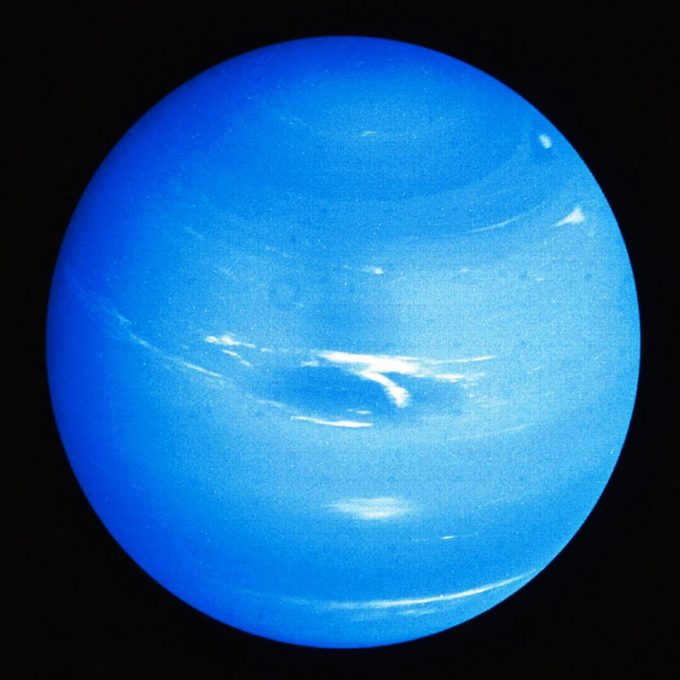
Ranked third in terms of mass, fourth in terms of size, and eighth in terms of distance from the Sun, Neptune is a planet with an equatorial radius of 24.76 thousand kilometers, which is 3.9 times smaller than that of Earth. With a mass of 1.0243-10 26 kg, this gas giant is 17 times more massive than Earth. The planet’s discovery was initially made through mathematical calculations. Neptune has a total of 14 known satellites, one of which, Triton, exhibits a unique phenomenon of having geysers of liquid nitrogen and moving in a retrograde motion. The planet’s atmosphere is primarily composed of hydrogen and helium gases. Surface winds on Neptune can reach speeds of up to 2100 km/h. The upper atmosphere of the planet is extremely cold, with temperatures dropping to -220 °C, while the planet’s core is heated to a scorching 7100 °C.
5. Earth
The planet Earth is the third planet from the Sun and the only known celestial body to support life. It has a diverse range of ecosystems and is home to millions of species, including humans. Earth is known for its unique combination of land, water, and atmosphere, which allows for the existence of life as we know it. The planet’s surface is covered in continents and oceans, with a variety of climates and environments. Earth is also the only planet in our solar system to have a complex system of tectonic plates, which contribute to the formation of mountains, earthquakes, and volcanic activity. Additionally, Earth has a natural satellite called the Moon, which orbits around it. Overall, Earth is a remarkable and precious planet that we must strive to protect and preserve for future generations.
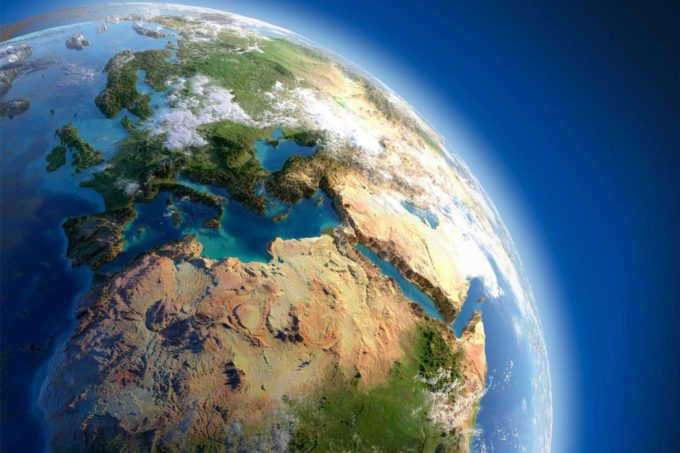
Earth, the third planet from the Sun and the fifth largest planet, has a mass of 5.9726-10 24 kg and an equatorial radius of 6378.1 km. It is the only known planet that supports life. The Earth’s surface is mostly covered by oceans, which occupy more than 70 percent of its total area. The planet is home to 195 independent states. The Earth’s atmosphere, the largest among the terrestrial planets, is composed of oxygen and nitrogen. It takes the Earth 365.25 solar days to complete one orbit around the Sun. The Moon is the Earth’s only natural satellite.
6. Venus
Venus, also known as the Evening Star, is the second planet from the Sun in our solar system. It is named after the Roman goddess of love and beauty. Venus is often called Earth’s sister planet because it is similar in size and composition. However, Venus has a much hotter and more hostile atmosphere, with temperatures that can reach up to 900 degrees Fahrenheit (475 degrees Celsius). The planet is covered in thick clouds of sulfuric acid, which create a greenhouse effect and trap heat. As a result, Venus has a runaway greenhouse effect, making it the hottest planet in our solar system. Despite its extreme conditions, Venus has been a subject of interest for scientists and astronomers. Several spacecraft have been sent to explore Venus, and they have provided valuable data about its atmosphere and surface. These missions have revealed that Venus has a volcanic landscape, with mountains, valleys, and vast plains. The planet also has a dense atmosphere, which produces a strong greenhouse effect. Scientists believe that studying Venus can help us understand the processes that lead to a runaway greenhouse effect and the potential consequences for a planet’s habitability.
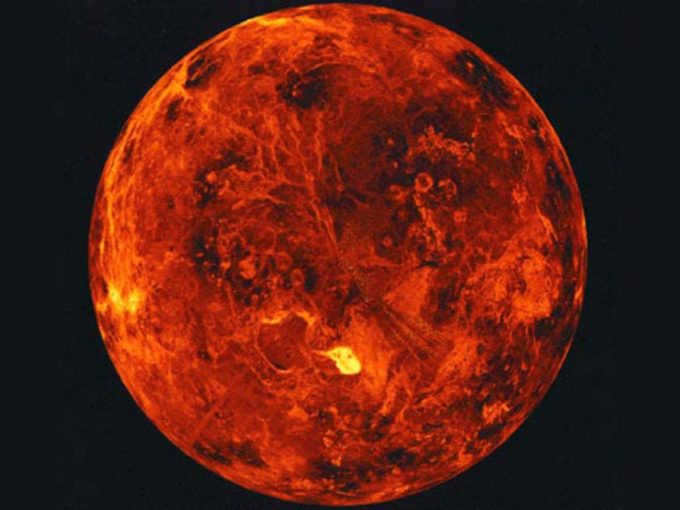
Venus, the 2nd furthest planet from the Sun and the sixth largest in the solar system, has a mass of 4.8675-10 24 kg, which is 0.8 times that of Earth, and an equatorial radius of 6051.8 km, which is 95 percent of Earth’s radius. Among the terrestrial planets, Venus has the densest atmosphere. The surface of the planet is covered by thick clouds of sulfuric acid. Unlike Earth, Venus has no natural satellites and lacks a magnetic field. The exploration of Venus involved the use of radio waves, with multiple spacecraft being sent to the planet to capture and transmit color images. The Soviet Union launched the largest number of spacecraft to Venus. In 2011, scientists discovered that Venus has an ozone layer at an altitude of 100 kilometers.
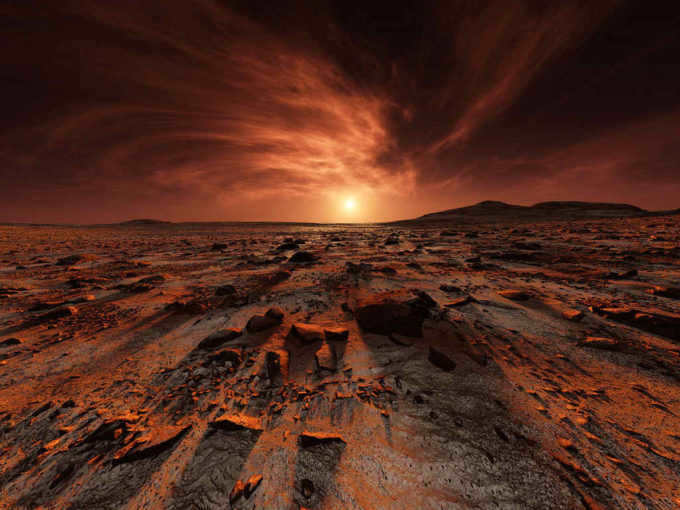
Mars, the fourth farthest planet from the Sun and the seventh largest in size, is located 55.76 million kilometers away from Earth. With a mass of 6.4185-10 23 kg, it has an equatorial radius of approximately half of Earth’s, measuring at 3396.2 km. Mars also has an area equivalent to Earth’s land area. The surface pressure on Mars is only 160 times less than Earth’s. This enigmatic planet is home to two satellites, Deimos and Phobos. Due to the mysterious disappearances of spacecraft, Mars remains the most intriguing planet in our solar system, yet it is also the most extensively studied by humans. Temperature on the surface of Mars ranges from 20 to -140 °C.
8. Mercury
Mercury, the eighth planet in our solar system, is a fascinating celestial object. It is known for its unique characteristics and has captivated the attention of scientists and astronomers for centuries. With its close proximity to the Sun, Mercury experiences extreme temperatures, ranging from scorching hot during the day to freezing cold at night.
Despite its small size, Mercury has a dense core, which sets it apart from other planets. It also has a very thin atmosphere, composed mainly of helium and hydrogen. The lack of atmosphere means that Mercury has no weather or air pressure, making it a harsh environment for life as we know it.
Mercury’s surface is rocky and pockmarked with impact craters, similar to the Moon. These craters were formed by the impacts of asteroids and comets over billions of years. The largest crater on Mercury, called Caloris Basin, is approximately 1,550 kilometers in diameter.
One of the most intriguing features of Mercury is its slow rotation. It takes the planet about 59 Earth days to complete one rotation on its axis, while it only takes 88 Earth days to orbit the Sun. This means that a day on Mercury is longer than its year.
Another interesting aspect of Mercury is its proximity to the Sun. Because of its close orbit, the planet experiences the highest temperature variations of any planet in our solar system. During the day, temperatures can reach up to 800 degrees Fahrenheit (430 degrees Celsius), while at night, they can plummet to -290 degrees Fahrenheit (-180 degrees Celsius).
Scientists have been able to study Mercury more closely thanks to space missions like NASA’s MESSENGER (MErcury Surface, Space ENvironment, GEochemistry, and Ranging) mission, which orbited the planet from 2011 to 2015. These missions have provided valuable data and insights into the planet’s composition, geology, and magnetic field.
In conclusion, Mercury is a unique and intriguing planet in our solar system. Its close proximity to the Sun, extreme temperatures, slow rotation, and rocky surface make it a fascinating object of study for scientists and astronomers.
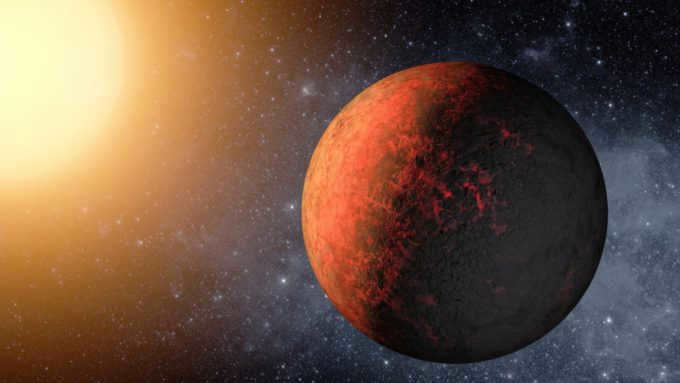
Mercury, the planet closest to the Sun and the smallest in size, has a radius of 2439.7 km at its equator. Its mass is 3.33022-10 23 kg, which is just over half the weight of Earth. Mercury belongs to the terrestrial group of planets in our solar system and does not have any natural satellites. It takes Mercury less than 88 Earth days to complete one orbit around the Sun. The surface temperature on Mercury can range from -180 to 430 degrees Celsius. The planet has a thin atmosphere and possesses a magnetic field. Spacecraft have been sent to explore Mercury.
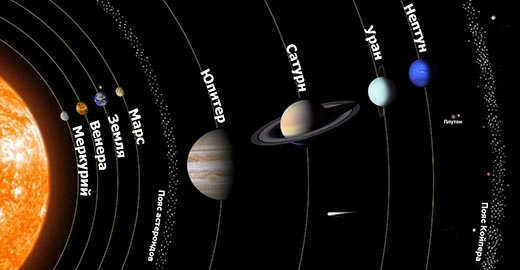
Today, it is universally accepted that the Earth is not flat and does not rest on three whales in the ocean. Even those who hold conservative religious beliefs no longer argue for the existence of a “firmament,” a worldview that was once prevalent in many countries a century ago.
Modern elementary school students are taught about the heliocentric structure of the solar system and that there are nine planets of varying sizes orbiting our sun. But is this really the case?
Introduction
Cosmogony, a branch of astronomy, focuses on the genesis, development, and arrangement of celestial bodies. With its origins dating back to ancient Greece, cosmogony has a long history as one of the oldest scientific disciplines.
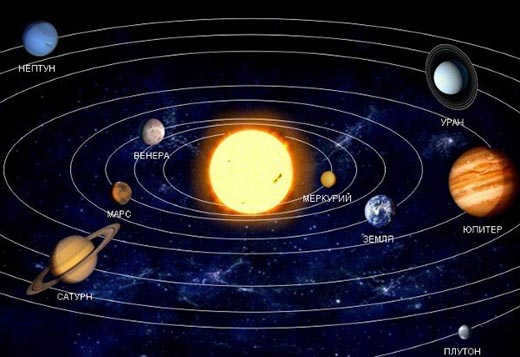
According to Aristotle’s theory, our Earth is considered to be the center of the Universe, with the Sun and other celestial bodies orbiting around it. Aristotle acknowledged the presence of seven planets, including the Moon and the Sun, but excluded the Earth itself, which served as the central point of the universe and the foundation of its structure.
However, this perspective was challenged in the sixteenth century by the renowned scientist Nicolaus Copernicus. Through the application of mathematical principles, Copernicus was able to demonstrate that it is not the luminary that revolves around the Earth, but rather the Earth and other planets that revolve around the Sun. This discovery marked a significant shift in scientific thought and sparked a true revolution in our understanding of the cosmos.
Next, there were new findings regarding planets – Uranus and Neptune, asteroids, and the moons of the enormous gas planets – Jupiter and Saturn, along with various other celestial objects. By the start of the 20th century, a collective understanding of the solar system had developed, although it wasn’t until 1930 that the final planet, Pluto, was identified. Since then, it has been widely accepted that the Solar Planetary System consists of nine planets.
What occurred in 2006?
In the astronomical realm in 2006, there was a subtle but significant event that went largely unnoticed by the majority of people. During the Congress of the International Astronomical Union, a decision was made to remove Pluto from the roster of planets and redefine the Solar System as comprising only eight planets. The inner group includes Mars, Earth, Venus, and Mercury, while the outer group consists of Saturn, Jupiter, Neptune, and Uranus.
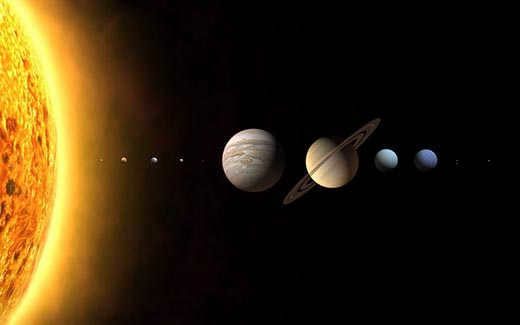
What was the reason behind this decision? The reality is that the number of celestial bodies orbiting the Sun is much greater than nine, and their sizes vary greatly. For instance, Jupiter alone has over twenty satellites, some of which are comparable in size to the inner planets like Mercury and even Earth.
Saturn also boasts several large satellites. In terms of the asteroid belts, they contain smaller celestial bodies orbiting the Sun, but their quantity is substantial.
Astronomers were compelled to establish specific criteria for identifying celestial bodies that can be classified as planets. Based on these criteria, Pluto was excluded from the list of planets we were taught in school.
As per the definition approved by the International Astronomical Union, a planet is a celestial object that:
– Orbits around a star (the Sun) rather than another planet;
– Possesses enough mass to assume a spherical shape and where its gravitational force surpasses the cohesive force of solid bodies;
– Occupies its own orbital path and does not have a neighboring mass of comparable size.
Based on these criteria, Pluto does not qualify as a planet since its mass is insufficient to give it a spherical shape. In fact, Pluto is more likely to be an irregular debris rather than a genuine planet.
Furthermore, there exists a satellite of similar mass known as Charon, which has an intricate orbit of mutual rotation. Essentially, this implies that it is a double dwarf planet consisting of both Pluto and Charon. Additionally, astronomers also classify the dwarf planet Ceres, whose orbit lies between that of Jupiter and Mars, as well as the Kuiper belt asteroids Sedna and Erida.
The celestial body beyond Neptune

Nevertheless, it is likely that the total count of planets in close proximity to the Sun will remain at nine. In the latter part of January 2016, astronomers K. Batygin and M. Brown made an announcement regarding the detection of a new planet, which has an orbit that is 20 times further away from the Sun than Neptune’s orbit.
This hypothetical planet takes over 10,000 years to complete a full revolution around the Sun. While scientists have yet to provide comprehensive proof of its existence, they assert that the likelihood is approximately 90%. The new planet has not yet been given a name – it is simply referred to as “the ninth planet” in the documents shared with the scientific community.
What do we know about the solar system?
The Milky Way is home to medium-sized spiral galaxies and serves as the backdrop for our Solar System, with the Sun taking center stage. Encircling the Sun are the primary planets, each accompanied by its own set of moons. In addition, the solar system encompasses dwarf planets, asteroids, meteorites, and various celestial bodies such as comets and space debris.
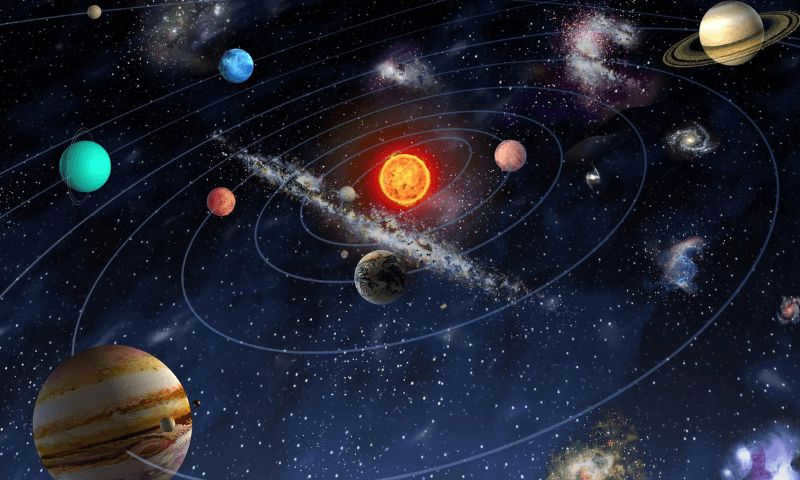
Astronomers believe that the majority of celestial bodies originated from the compression of dust and gas clouds. Initially, gaseous spheres known as “protostars” formed. When a special energy source triggered and raised the temperature of the protostar’s interior to ten million degrees, they transformed into actual stars, with one of them being the Sun.
There is a hypothesis suggesting that the gas-dust cloud, which gave birth to the Sun and other planets in the solar system more than 4.6 billion years ago, was the result of a powerful explosion from a supernova star with a mass exceeding 30 times that of the Sun.
Our galaxy is known for its exquisite and breathtaking arrangement. For countless eons, the planets within it gracefully traverse their designated paths, adhering to the precise laws that govern their movements, thus maintaining the established cosmic harmony.
The mightiest celestial bodies in our star system
Nestled at the heart of this intricate system, the central star, aptly named the Sun, shines with a brilliance that surpasses the majority of its stellar counterparts scattered throughout the galaxy.
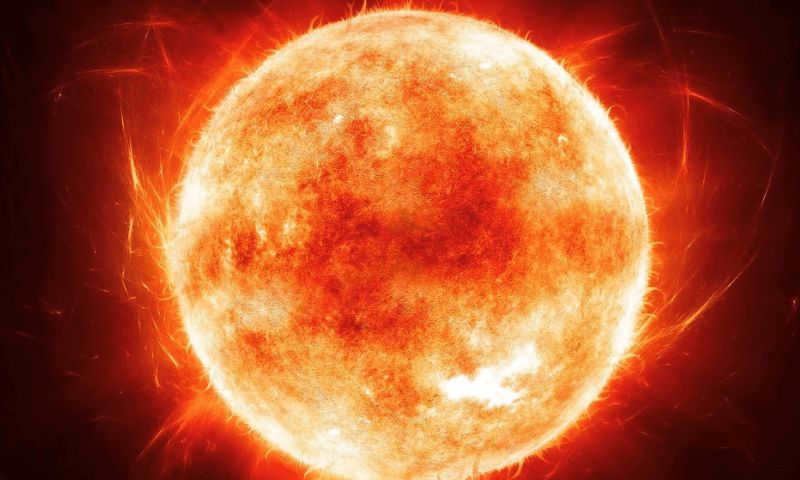
The temperature on the surface of the Sun exceeds 5,700 degrees Celsius. The Sun is encircled by planets from the Earth group, which possess higher density as a result of the inclusion of silicates and metals in their composition, as well as by massive ice and gas giants.
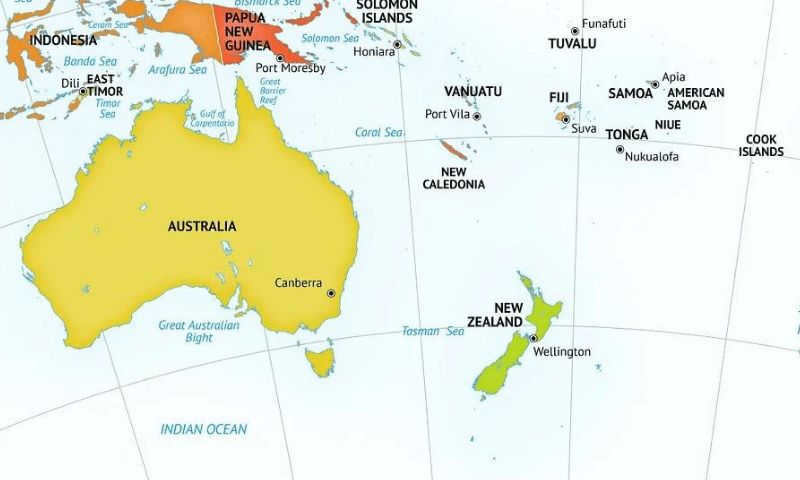
Top 12 largest islands in the world
There are more than 500,000 large and small islands in the oceans and seas of our planet. Some of them are famous for their size and beauty. Here is a list of the 12 largest islands on Earth:
- Greenland – With an area of 2,166,086 square kilometers, Greenland is the largest island in the world. It is located in the North Atlantic Ocean and is an autonomous territory of Denmark.
- New Guinea – This island is divided between two countries: Papua New Guinea and Indonesia. It has an area of 785,753 square kilometers.
- Borneo – Borneo is the third largest island in the world, with an area of 748,168 square kilometers. It is shared by Brunei, Indonesia, and Malaysia.
- Madagascar – Located off the eastern coast of Africa, Madagascar is the fourth largest island in the world. It has an area of 587,041 square kilometers.
- Baffin Island – Baffin Island is the largest island in Canada and the fifth largest in the world. It has an area of 507,451 square kilometers.
- Sumatra – Sumatra is an island in Indonesia and is the sixth largest island in the world, with an area of 443,066 square kilometers.
- Honshu – Honshu is the largest island in Japan and the seventh largest in the world. It has an area of 225,800 square kilometers.
- Victoria Island – Located in the Arctic Archipelago, Victoria Island is the eighth largest island in the world, with an area of 217,291 square kilometers.
- Great Britain – Great Britain is the ninth largest island in the world, with an area of 209,331 square kilometers. It is home to England, Scotland, and Wales.
- Ellesmere Island – Ellesmere Island is the tenth largest island in the world, with an area of 196,236 square kilometers. It is part of the Canadian Arctic Archipelago.
- Sulawesi – Sulawesi is an island in Indonesia and is the eleventh largest island in the world, with an area of 174,600 square kilometers.
- South Island – South Island is the larger of the two main islands of New Zealand and is the twelfth largest island in the world, with an area of 150,437 square kilometers.
Jupiter
It is a massive sphere of gas with a diameter of 139,822 kilometers, and its composition is similar to that of the sun. Jupiter has a radius of 11.2 times that of Earth. It is 317.8 times more massive than our planet and has 79 satellites. Jupiter is the largest planet in our solar system and is located at a distance of 778 million kilometers from the Sun.
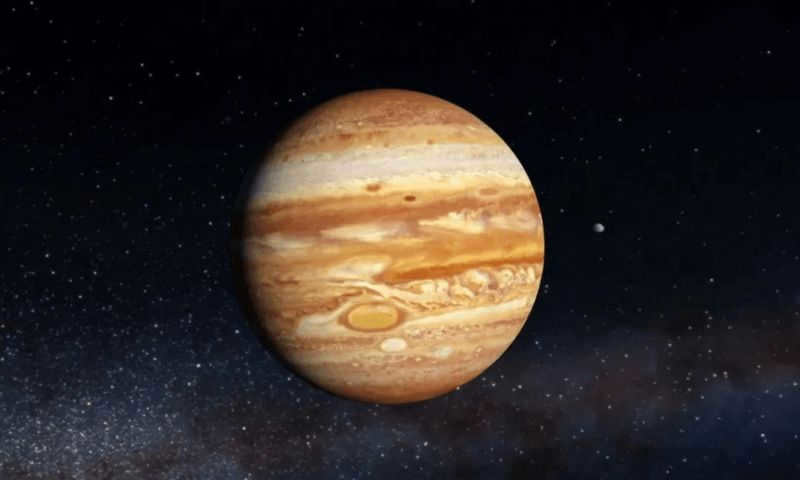
The planet’s atmosphere is primarily composed of hydrogen and helium. Below it lies a boiling hydrogen ocean, which takes on a rarified shape due to the immense pressure.
As the fifth farthest planet from the Sun, this immense celestial body spins at a rapid pace, resulting in a constant presence of destructive winds and hurricanes. Being the largest planet in our solar system, it captivates with its unique and fascinating appearance. The atmospheric layer gives rise to vibrant ribbons of clouds, varying in thickness, color, and size.
Within this cloud mass, there are atmospheric formations in the form of vortices, some of which have persisted for over 300 years. Among them is the Great Red Spot, known for its colossal dimensions.
Saturn
Saturn is an incredibly stunning planet and is known for being the second largest planet in our solar system. One of its most famous features is its gaseous rings, which are visible even with a basic telescope. While it was discovered back in the 17th century, there is still a lot that remains unknown about this fascinating planet. Saturn is positioned as the sixth planet from the Sun and its surface layer is entirely fluid. With a diameter measuring 116,460 kilometers, Saturn is truly a massive celestial body. In terms of mass, it falls somewhere between 9 and 22 times the mass of the Earth.
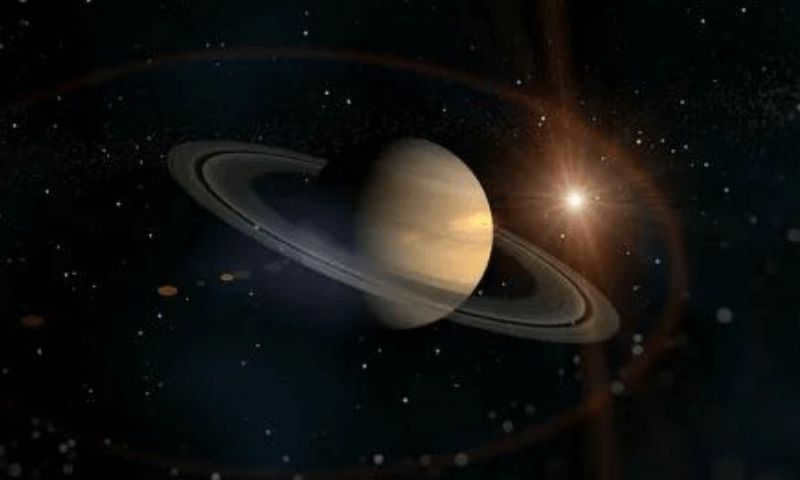

The atmosphere of Saturn consists mainly of hydrogen and helium, with small amounts of other gases. Scientists theorize that the planet’s interior is made up of a core composed of metal and silicate, surrounded by compressed gases that have been transformed into a metallic state. The density of these gases is uneven, with a gradual decrease as one moves away from the center.
In comparison to Earth, Saturn is 95.2 times more massive. It shares a similar rotational speed with Jupiter, which results in the formation of vortices and clouds in its atmosphere. The planet’s winds can reach speeds of up to 1,800 km/h.
Did you know: This celestial object is renowned for its magnificent rings, which are made up of countless ice fragments. These shards have a remarkable ability to reflect light, making them highly visible. The rings have a thickness of 1 kilometer and a radius of 73,000 kilometers. Astronomers believe that they formed as a result of the planet’s satellite being shattered by its powerful gravitational force.
Recent studies have revealed the existence of 82 satellites covered in ice. One of these satellites, known as Titan, boasts a dense nitrogen atmosphere and is home to liquid methane lakes.
Neptune
Neptune, the farthest planet from the Sun, is another massive celestial body that shares many physical and chemical characteristics with Uranus. Its discovery in the 18th century was a result of complex mathematical calculations. However, it wasn’t until 1989 that scientists were able to gather more comprehensive and reliable data about Neptune’s structure and unique features, thanks to the Voyager-2 mission.
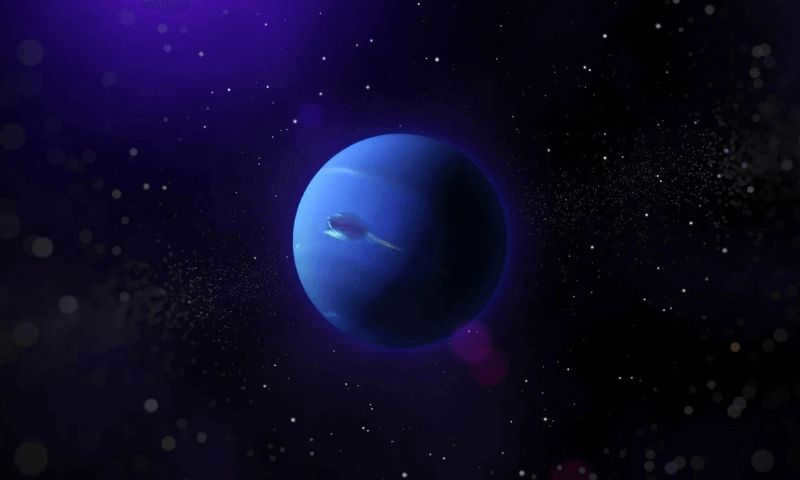
The atmosphere of Neptune is composed of hydrogen, helium, and methane, which gives the planet its distinct bluish glow. The core of Neptune is made up of rocks and ice, surrounded by a mantle that is a liquid mixture of water and ammonia. The surface temperature of Neptune is approximately -214 degrees Celsius.
Neptune has a diameter of 49,244 kilometers, which is equivalent to 3.86 times the radius of Earth. The planet is 17 times heavier than Earth. It takes about five hours for the Sun’s light to reach the surface of Neptune. Neptune orbits around its main star in 165 Earth years, and it rotates around its axis much faster than Earth. A Neptunian day lasts for 17 hours.
Ranking of the largest waterfalls, along with the most popular waterfalls among tourists
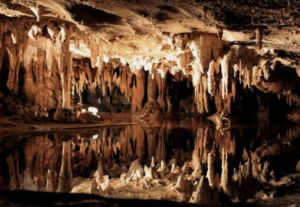
The Abysses – the top 11 deepest locations on Earth
The Top 15 highest mountains in Bashkortostan
Uranus
In terms of size, Uranus, the seventh planet from the Sun, is slightly smaller than Saturn or Jupiter, but no less fascinating and vibrant. In 1986, scientists obtained a comprehensive understanding of its structure and characteristics based on data from the Voyager-2 spacecraft.
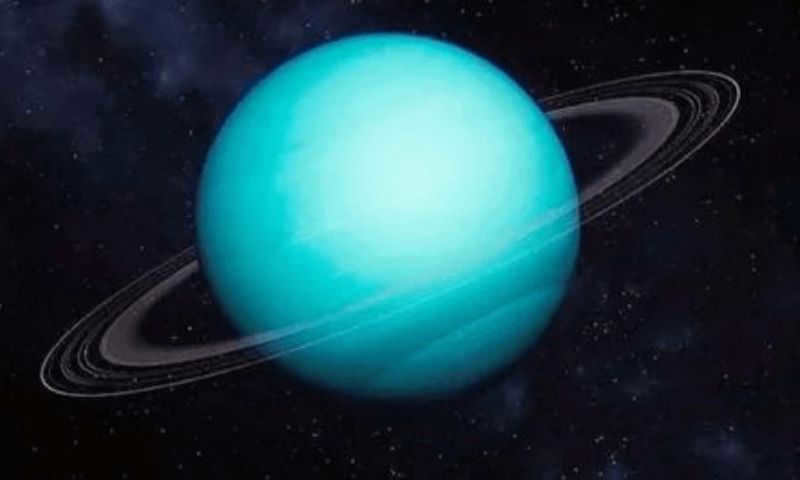
With a diameter of 50,724 kilometers, Uranus is four times larger than Earth. It has a mass that is 14.54 times greater than our planet. The planet’s atmosphere, known for its distinct blue-green color, is primarily composed of hydrogen, helium, and methane. The core of Uranus is composed of rock and ice. The temperature on this planet is extremely low, reaching -224 degrees. Along with these icy conditions, Uranus experiences powerful winds that can reach speeds of 900 kilometers per second.
It takes three hours for sunlight to reach Uranus, and one year on this planet is equivalent to 84 Earth years. Uranus also has rings that are positioned perpendicular to its orbit. The planet itself rotates on its side, resulting in alternating periods of polar night and polar day in its hemispheres.
Researchers have made an incredible discovery regarding Uranus, as they have found 27 satellites orbiting the planet. These satellites have been named after famous literary characters from the works of W. Shakespeare and A. Pope. Among these satellites, the most distant ones are Oberon and Titania, which were first observed by William Herschel back in 1787.
Planet Earth
stands out among the other celestial bodies in our solar system due to its remarkable characteristics. Not only is it the heaviest planet in the Earth group, but it is also the only one known to sustain life. This is mainly because of its fortunate position in the Goldilocks Zone, a region where conditions are just right for life to thrive. If Earth were located any closer to the Sun, its surface would be devoid of water, as it would evaporate completely. On the other hand, if it were farther away, everything would freeze, making it impossible for any form of life to exist.
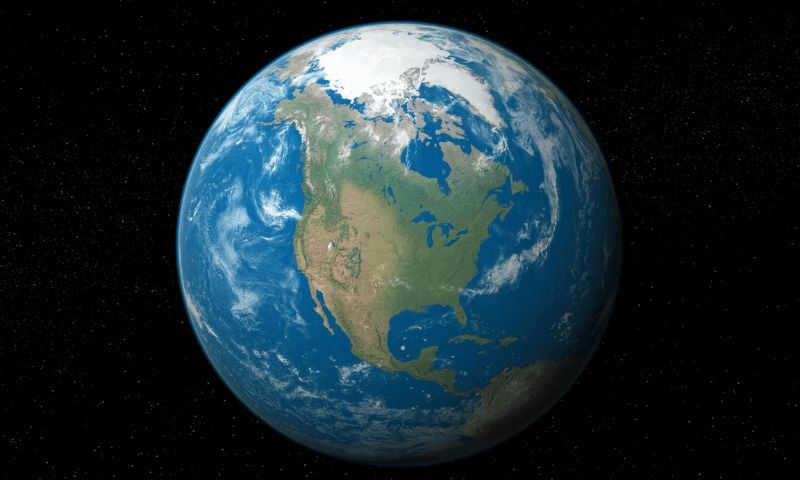
The diameter of our planet is 12,742 kilometers. It completes a full orbit around the Sun in a span of one year or 365 days, while simultaneously rotating on its axis within a 24-hour period, resulting in the cycle of day and night.
As the fifth planet in order of distance from the Sun, Earth possesses an atmospheric layer consisting primarily of a mixture of nitrogen, oxygen, carbon dioxide, and other gases. Nitrogen and oxygen are crucial components in the formation of DNA. Additionally, the Earth’s ozone layer serves as a natural “radiation absorber”. The oxygen we breathe is produced by plants through the process of photosynthesis, which involves the absorption of carbon dioxide. Without this green mass, Earth would resemble its closest neighboring planet, Venus, devoid of any signs of life.
Did you know? The fascinating thing about our planet is that it breaks the mold by not being named after figures from mythology. Interestingly, in both Russian and English, the word “Earth” translates to “solid surface” or “dry land”.
The Earth’s composition is primarily solid, composed mostly of silicates. Deep within, the core remains solid, while a liquid shell surrounds it, covered by the asthenosphere – the upper layer of the mantle. This is followed by the lithosphere, which consists of the viscous upper part of the mantle and the sturdy crust. Uniquely, our planet is the only one in the Solar System to possess a plate tectonic structure. Additionally, a significant portion of its surface is covered by water, making up approximately 70%.
Due to the Earth’s slight tilt of about 23 degrees on its axis, we experience distinct seasons throughout the year, adding variety to our lives.
The Moon is the Earth’s only satellite, measuring one-quarter of the Earth’s size. It exerts a gravitational force that influences Earth’s water bodies, leading to the formation of tides. Because it rotates synchronously with the Earth, the Moon always presents the same face towards us.
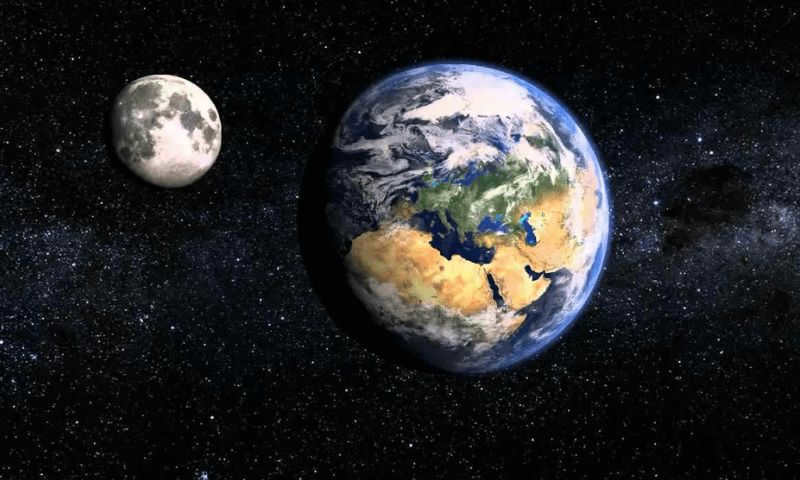
Top 15 highest mountains in Bashkortostan
The unique natural landscape and favorable geographical location at the “crossroads of Europe and Asia” create…
Venus
If it were not for the absence of living organisms, this planet could be called Earth’s twin sister. They have similar orbits and structures, except that in the atmosphere of Venus, carbon dioxide replaces oxygen, and the clouds consist of poisonous compounds. When scientists first explored the planet, they believed that it was constantly raining beneath the clouds.
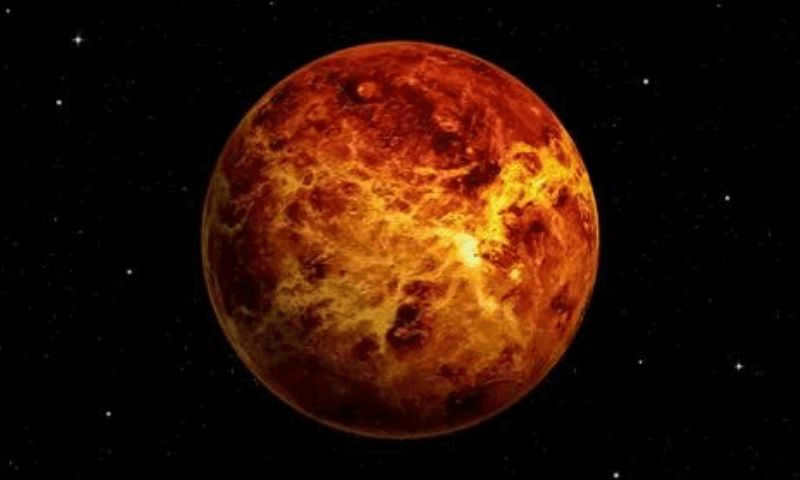
The diameter of Venus measures 12,104 kilometers. It shares similarities in mass and density with our own planet. The presence of a thick layer of clouds near the surface hinders our ability to fully study it. The planet’s greenhouse effect causes its crust to heat up to a scorching +480 degrees. Due to the dense cloud cover, sunlight barely penetrates through, resulting in a perpetually dark and cloudy environment. Additionally, Venus experiences periodic episodes of acid rain.
The study of Venus is hindered by the increased atmospheric pressure, which is comparable to the conditions found at a depth of 900 meters in Earth’s oceans. This high pressure makes it difficult for researchers to gather information about the planet. Previous spacecraft missions to Venus could only operate for a short period of time, usually no more than two hours. However, scientists have managed to determine that the majority of Venus’ atmosphere is composed of carbon dioxide. Additionally, it is known that the planet is home to numerous volcanoes, which intriguingly lack craters.
One interesting fact about Venus is that its dense cloud cover reflects sunlight, making it appear as a bright shining star in the Earth’s sky. This unique characteristic has inspired many poems and lyrical works dedicated to the planet. In fact, Venus received its name in honor of the goddess of love and beauty.
The length of a Venusian day is greater than that of other planets. It is about 243 Earth days. Meanwhile, the year on Venus consists of 225 Earth days. There is no change in seasons.
Mars
This planet is half the size of Earth. Its diameter is 6,779 kilometers. Mars stands out with its reddish color. For a long time, it was believed to be inhabited, with people mistaking the natural landscape of the planet for man-made structures. However, these theories have not been proven to this day.
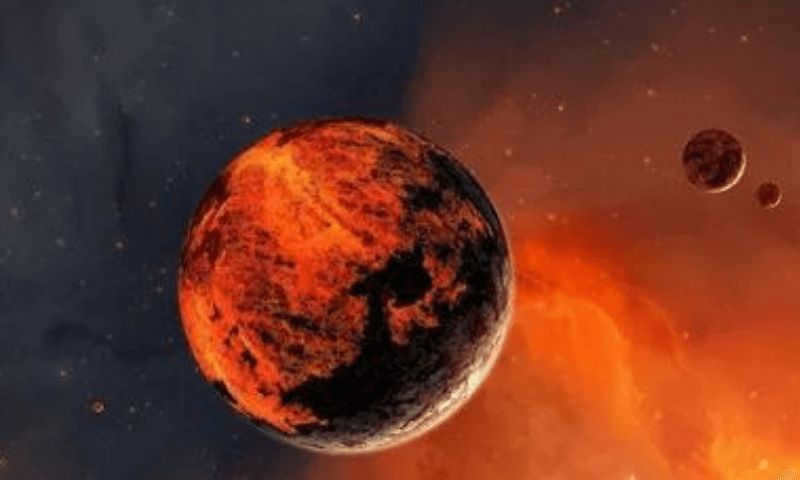
Mars, the fourth planet from the Sun, has an atmosphere that bears a striking resemblance to that of Venus. The majority of its atmosphere is composed of carbon dioxide, but it is in a highly rarefied state. As a result, Mars does not experience the greenhouse effect like Venus does. The temperature on the surface of the “red planet” hovers around zero, and the atmospheric pressure is a mere 160 times less than that of Earth.
Interestingly, Mars does have water in its atmosphere, and its poles are adorned with caps of non-smoldering glaciers, which have been captured in photographs taken by spacecraft. However, liquid water is not present on the planet. A Martian year is twice as long as an Earth year, and the length of a day is similar, lasting 24 hours and 40 minutes. Thanks to its axis being tilted at an angle of 25.2 degrees, Mars, like Earth, experiences distinct seasons.
Did you know that scientists are persistent in their efforts to explore Mars, also known as the “red planet”? Despite its challenging conditions, including a thin atmosphere, low oxygen levels, high radiation, and frequent dust storms, Mars still holds potential for supporting life.
One fascinating fact about Mars is that it is home to the tallest mountain in the entire solar system, called Olympus Mons. This volcano reaches a staggering height of 27,000 meters, which is three times taller than Earth’s tallest peak, Mount Everest.
Mars also has two satellites orbiting around it, named Phobos and Deimos.
Mercury is the planet that orbits the Sun at the shortest distance. With a diameter of 4,879 kilometers, it has a similar appearance to the Moon, characterized by numerous craters on its rocky surface. In terms of size, Mercury has a radius that is about 0.383 times that of Earth, while its mass is approximately 0.055 times that of our planet.
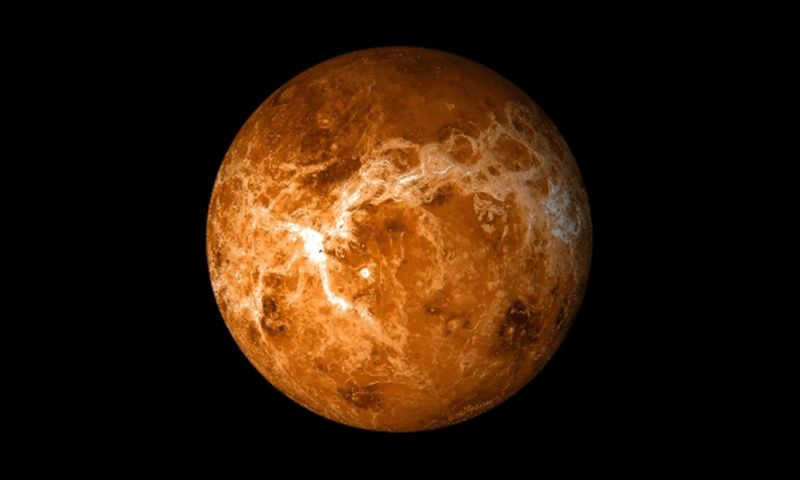
The proximity of Mercury to the Sun, the main source of heat in our solar system, causes its surface to become incredibly hot, reaching temperatures as high as +430 degrees. However, during the night, the planet cools down dramatically to a chilly -175 degrees. This extreme temperature fluctuation is one of the most remarkable characteristics of Mercury. Despite its relatively clear visibility, studying this planet has proven to be quite challenging. In fact, it was only in 1974 that the first clear photographs of Mercury’s surface were obtained. As of now, our knowledge about this planet remains quite limited.
Mercury lacks any significant atmosphere, possibly due to the planet’s small size and intense solar radiation. Its year is only 88 Earth days long, while a single day on Mercury lasts as long as two local years. The lack of axial tilt means there are no seasons on this planet. Additionally, Mercury is devoid of any natural satellites.
Fascinating information about the celestial bodies
The cosmos harbors numerous enigmas and is in no rush to disclose them to scientists. As a result, our knowledge about our solar system remains limited. Here are several intriguing facts about some of the celestial bodies:
- Jupiter, a mighty and massive planet, functions as a natural shield for the Earth, warding off large objects from entering our system by captivating them with its immense gravitational force.
- Furthermore, Jupiter boasts the swiftest rotation among all the planets, completing a full revolution on its axis in merely 12 Earth hours.
- One of Jupiter’s moons, Europa, contains twice the amount of water found on Earth.
- Uranus, on the other hand, claims the title of the coldest planet in our solar system, maintaining an average temperature of approximately -224 degrees.
There are ongoing debates among scientists about whether our solar system is one-of-a-kind or if there are similar planetary systems in other galaxies, with similar properties. Currently, not all eight planets in our solar system have been fully studied, which means that many mysteries will remain unsolved for a long time to come.
The Solar System (known as “systema solare” in Latin) serves as our celestial neighborhood, where our home – Earth, along with seven other sizable neighbors, and countless smaller inhabitants are located. The common thread that unites us all is the Sun – a G2V spectral classification yellow dwarf. This dwarf is still an impressively vast entity, with a diameter of 1,392,000 kilometers, a staggering 109 times larger than our planet. It comes as no surprise, then, that the Sun comprises the majority of the system, while the remaining planets, moons, asteroids, and other celestial bodies make up a mere 0.014%.
Unique Features of Our Solar System
In this article, we will explore the distinctive qualities of our solar system:
- Mass
- Dimensions
- Age
- Speed
- Composition
- Rocky Planets
- Gas Giants
The Weight of the Solar System
Having discussed the concept of weight, let’s delve into it further. Weight is measured in terms of solar masses M☉, which is equivalent to 1.0014. To convert this value into kilograms, we must multiply it by the mass of the Sun, which is 1.9885⋅10 27 tons. This calculation yields a result of 1.9912839⋅10 30 kg. In simpler terms, this is equivalent to 1 undecillion 991 decillion 283 nonillion 900 octillion kilograms. Another method of expressing this value is in tons, using decimal SI prefixes. However, even this approach is not very practical, as it would be stated as 1 million 991 thousand 283 whole and 9 tenths of an Itt. This is because the prefix iotta is currently the largest prefix in use. Hence, when discussing celestial bodies, it is more convenient to use the unit of measurement M☉ rather than kilograms or tons.
The dimensions of the Solar System
The dimensions of the Solar System are measured in astronomical units. One astronomical unit, or 1 a.u., represents the average distance between the Earth and the Sun, which is approximately 149,597,870,700 meters. The outermost boundary of the Solar System is defined by a region known as the Kuiper Belt, which is comprised of small celestial bodies that have remained from the formation of the Solar System. The Kuiper Belt is situated at a distance ranging from 30 to 50 a.u., or approximately 4,487,936,121 to 7,479,893,535 kilometers from the Sun.
In addition to the Kuiper Belt, there is another fascinating region known as the Oort Cloud. This hypothetical spherical object is composed of hundreds of billions of slowly drifting icy debris. It is located at a distance of 50,000 to 100,000 astronomical units (a.u.). At this point, we need to discuss even larger units of distance in space, specifically the light year. A light-year is defined as the distance that light travels in a vacuum in 365.25 days at a speed of 299,792,458 meters per second. In terms of kilometers, this is equivalent to 9,460,730,472,580,800 (9 quadrillion 460 trillion 730 billion 472 million 580,000,800) kilometers, or approximately 9.46⋅10^12 kilometers. If we convert a light-year into astronomical units, the ratio is approximately 1 sv.year ~ 63,241.08 a.u. As a result, the Oort Cloud is situated at a distance from the Sun of about 0.79 to 1.58 sv.yr.
The gravitational boundary of our solar system is considered to be the outer edge of the Oort Cloud. Once an object passes this point, which is approximately 2 billion years from the Sun, it is no longer held by the star’s gravitational pull. This is where the solar wind meets the interstellar medium, creating what is known as the Heliopause – the final frontier of our solar system. Inside the Heliopause lies the Heliosphere, which encompasses our entire solar system. According to a 2018 NASA report, the Voyager-2 spacecraft reached the boundary of our solar system, following in the footsteps of its predecessor, Voyager-1, which was launched in 1977 and has already crossed this boundary. Both spacecraft have now ventured beyond the Heliosphere.
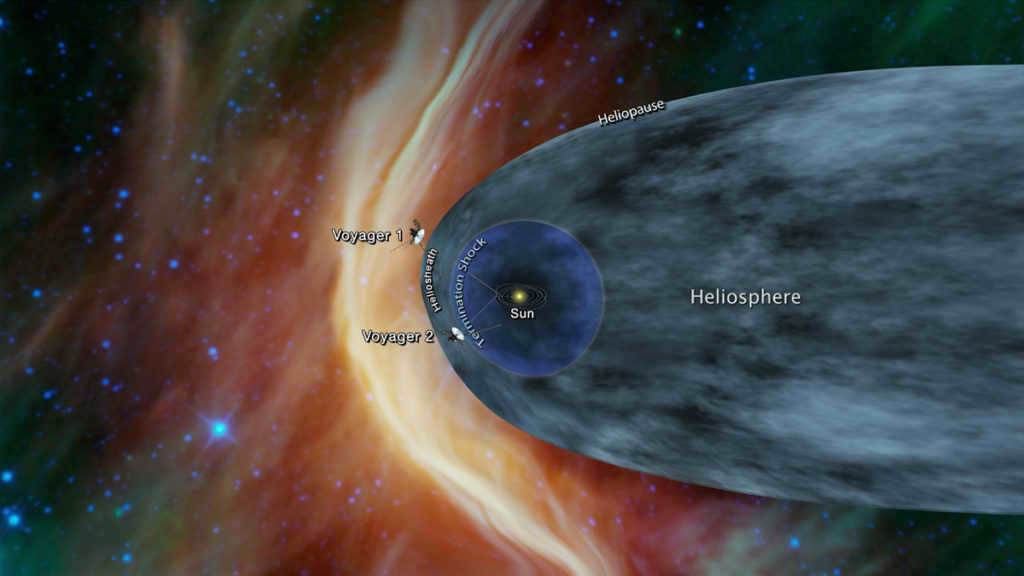
Determining the age of the Solar System
The velocity of the Solar System
The speed at which the Sun and all objects within the Heliosphere orbit around the center of our galaxy, the Milky Way, is known as the velocity of the Solar System. The Solar System is located approximately 25,000 light-years away from us and has a speed ranging from 200 to 250 kilometers per second, or 720,000 to 900,000 kilometers per hour. Despite this impressive speed, it takes our Solar System about 230 million years to complete one full revolution. Currently, our Solar System is traversing through the Local Interstellar Cloud, which is situated within a region of sparsely distributed hot gas known as the Local Bubble. This Local Bubble is located within the Orion Arm, an irregularly shaped section of our galaxy.
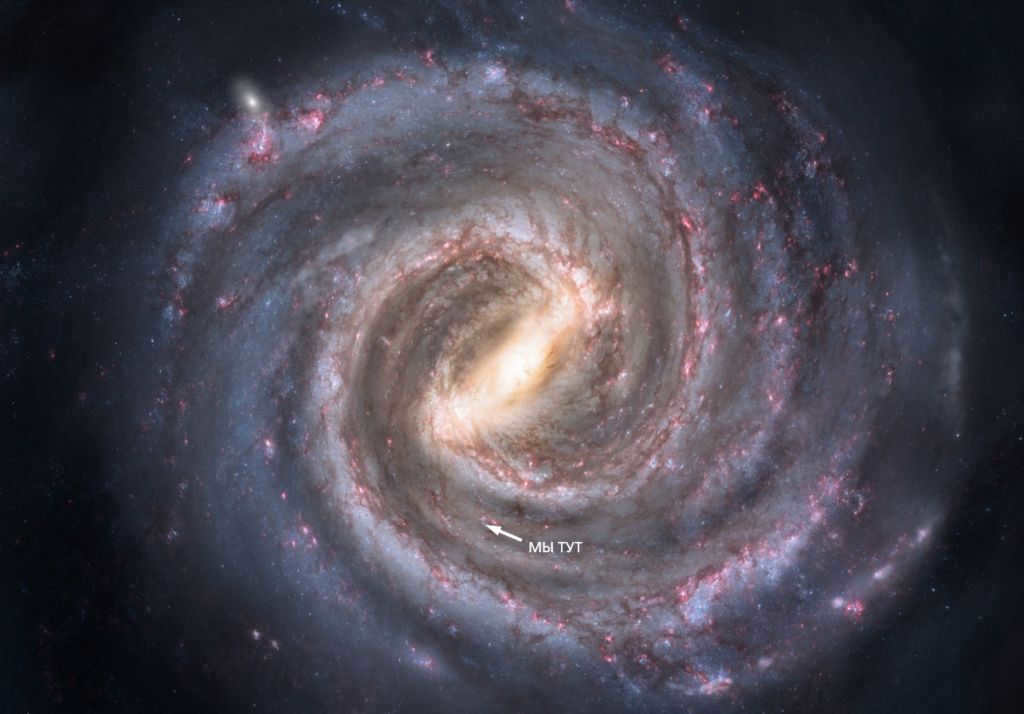
The Earth rotates around the Sun at a velocity of 107,218 km/h, and it also spins on its axis at a speed of 1,674 km/h. As for our solitary natural satellite, the Moon’s orbital velocity around the Earth is 1.023 km/s or 3,682.8 km/h.
Structure of the Solar System
Aside from our star, the Sun, the Solar System is comprised of 8 planets and their 205 moons, 5 dwarf planets and their 9 moons, 384 minor bodies and their 403 moons, 3,650 comets, 959,001 asteroids, and an infinite number of meteorites, bolides, meteors, meteoroids, and other celestial objects of smaller size.
The composition of the Sun is almost the same as that of the Solar System, accounting for over 99.8% of its mass. Our star consists of hydrogen, which makes up 73.5% of its mass, and helium, which makes up 24.9%. Interestingly, these two elements also make up the majority of the entire universe in a similar ratio. The remaining 1.6% of the Sun’s matter is composed of oxygen, carbon (0.3%), and trace amounts of iron, neon, nitrogen, silicon, magnesium, and sulfur (each about 0.1%). There are also 82 other impurities that make up only 0.04% of the total mass. In 2009, astrophysicists Nicolas Grevesse, Martin Asplund, Jacques Sauval, and Pat Scott published a paper called “The chemical composition of the Sun,” providing a more detailed breakdown of the Sun’s composition in various regions.
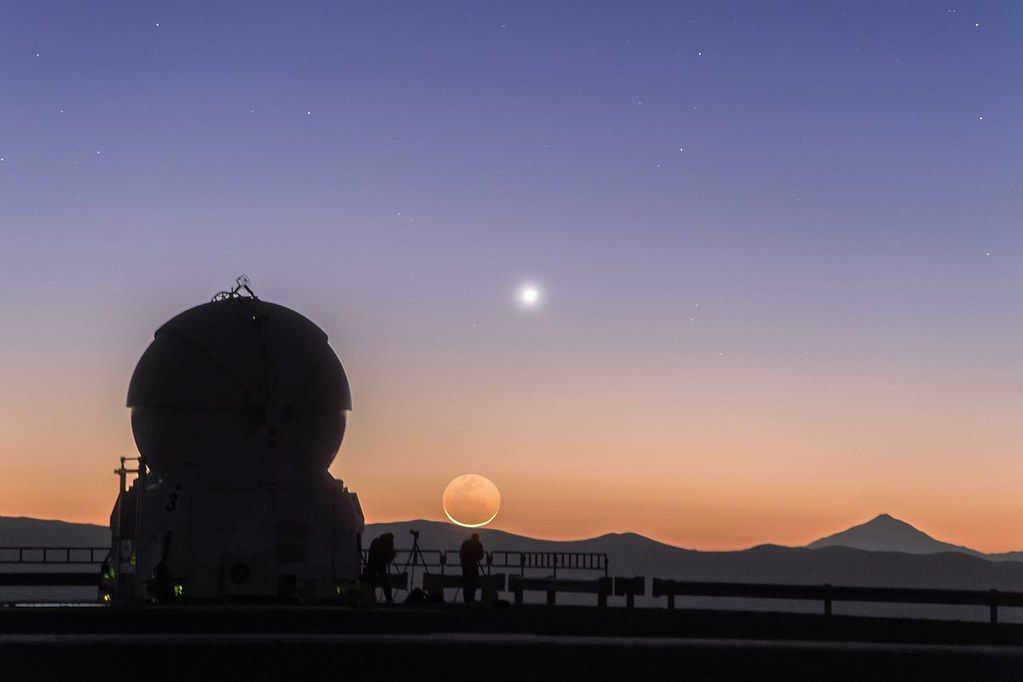
Earth is known for being the most dense planet in our Solar System, with a density of 5.52 g/cm³. It also has the largest mass among the small group of planets, weighing in at 5.97⋅10 24 kg. Not only that, but Earth also boasts the largest diameter at its equator, measuring 12,756.2 km. One unique feature of our planet is the presence of a hydrosphere, which is believed to be the birthplace of life around 3.5-4 billion years ago. Interestingly, the Moon, Earth’s only natural satellite, is located at a distance of 384,467 km.
Mars, known as the Red Planet, is the farthest planet in the Earth’s group. Its name comes from the Roman god of war. The reason for its red color is the presence of the mineral maghemite. Mars is about 10 times lighter than Earth, with a mass of 6.41⋅10 23 kg. The diameter of its equator is approximately half that of Earth, measuring 6,792.4 km. Due to its distance from the Sun, which is about 228 million kilometers, Mars has a harsh climate. The surface temperature can drop as low as -153°C, and the wind speed can reach 170 km/h. A Martian day lasts 24 hours and 37 minutes, while a year on Mars is almost 687 days long. Mars has two moons: Phobos and Deimos, which mean “fear” and “terror” in Latin. The planet itself was first discovered by the ancient Egyptians between the 10th and 15th centuries BC. In the 16th century AD, Tycho Brahe observed that Mars was moving at a different speed compared to other planets. It was first observed through a telescope by Galileo in 1610.
The massive planets
Jupiter, the largest planet in the Solar System, is known as the supreme Roman thunder god. With a diameter of 139,820 km (142,984 km at the equator), Jupiter is 11 times larger than Earth. Its equatorial circumference measures 439,263.8 km, making it a truly massive celestial body. In terms of volume, Jupiter is approximately 1,321 times larger than Earth, and its mass is about 1.9⋅10 27 kg, a staggering 318 times heavier than our own planet. Similar to the Sun, Jupiter is classified as a gas giant, consisting mainly of Hydrogen (89.8%) and Helium (10.2%). The planet’s atmosphere is known for its fierce winds, with the most notorious storm being the Great Red Spot, which has been observed since the 17th century. This storm features wind speeds of up to 539 kilometers per hour. Over the past 90 years, the size of the Great Red Spot has been gradually decreasing and currently measures approximately 24-40 thousand kilometers in length and 12-14 thousand kilometers in width. Jupiter also possesses 4 rows of rings, which were discovered in 1979. These rings have a combined thickness of about 23 thousand kilometers. In terms of satellites, Jupiter has a total of 79, with 53 having names and 26 having temporary names (Provisional moons). The largest satellite is Ganymede, which is also the largest satellite in the Solar System. Surprisingly, Ganymede’s diameter is even larger than that of Mercury! The distance from Jupiter to the Sun is approximately 778.3 million kilometers, and the average surface temperature on the planet is about -130°C. Jupiter has the shortest days in the entire Solar System, lasting only about 10 hours, while its year spans 4333 days. Jupiter has been known to humans since ancient times, and its observation through telescopes began with Galileo in 1610. Galileo was also the first to discover Jupiter’s satellites, which were subsequently named Io, Ganymede, Europa, and Callisto. In 1973, the Pioneer 10 spacecraft became the first to reach Jupiter, and in 2016, the Juno spacecraft arrived at the planet’s surface for a comprehensive study of its atmosphere, internal structure, and magnetosphere, in an effort to uncover the mysteries of this gas giant’s origin and evolution.
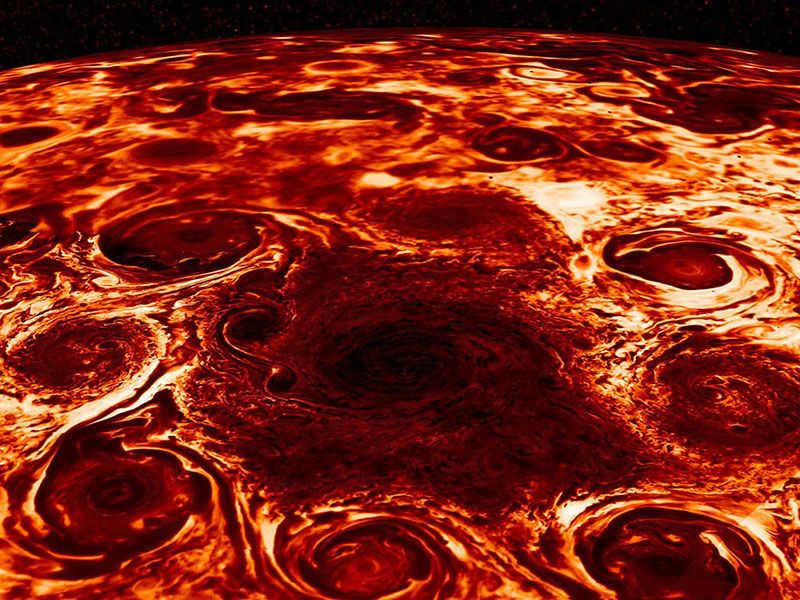
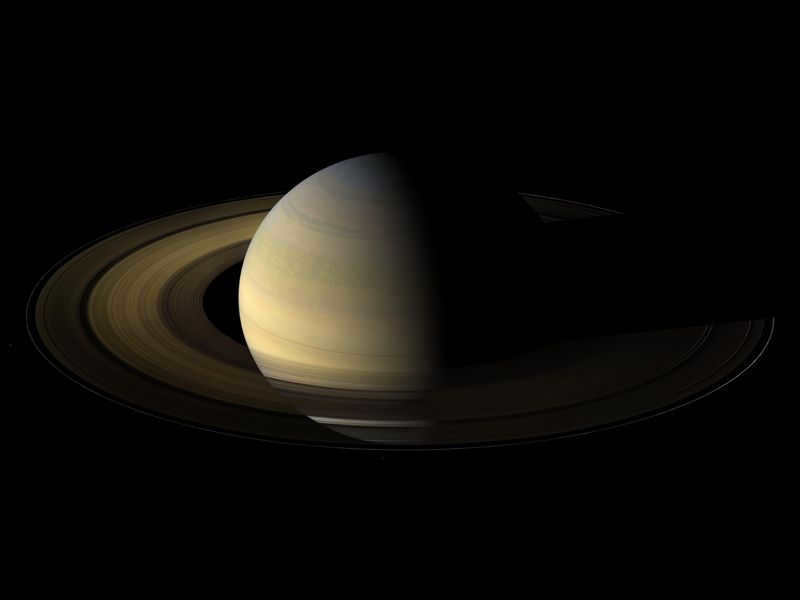
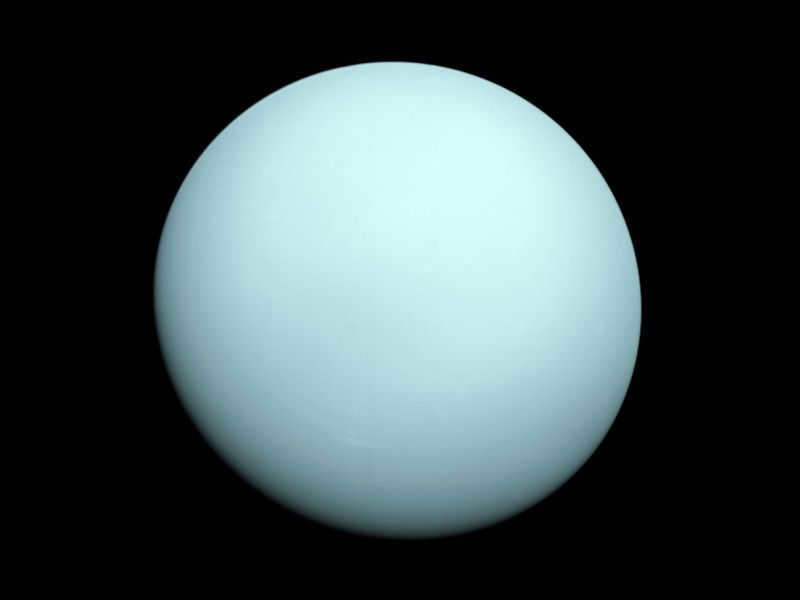
Neptune became the eighth planet in the solar system after Pluto was reclassified. This icy giant has a composition similar to Uranus and shares a similar diameter of 49,244 km and a mass of 102.4⋅10,24 kg. Due to its vast distance from the Sun (4.47 billion kilometers), Neptune was not observed directly, but rather discovered through mathematical calculations in 1846. A Neptunian year lasts approximately 60,190 days (equivalent to 165 Earth years), while a day on Neptune is only 16 hours long. The surface temperature on this distant planet plunges to a bone-chilling -214°C, and its winds are the most ferocious in the entire solar system, reaching an unimaginable speed of 2160 km/h! Like its fellow gas giants, Neptune possesses a set of rings, although they are less developed compared to those of Jupiter and were first noticed in 1968. Currently, Neptune is known to have 14 satellites.
As of now, the solar system consists of eight planets.
The planets in the solar system are arranged according to their distance from the Sun, starting with Mercury, followed by Venus, Earth, Mars, Jupiter, Saturn, Uranus, and Neptune.
Pluto, which used to be considered the ninth planet, was officially removed from the list of solar system planets in 2006. However, in 2020, scientists revealed that there is a 90 percent chance of a ninth planet existing on the outer edges of the solar system.
Jupiter, the largest planet in our solar system, is known for its immense size and powerful gravitational pull.
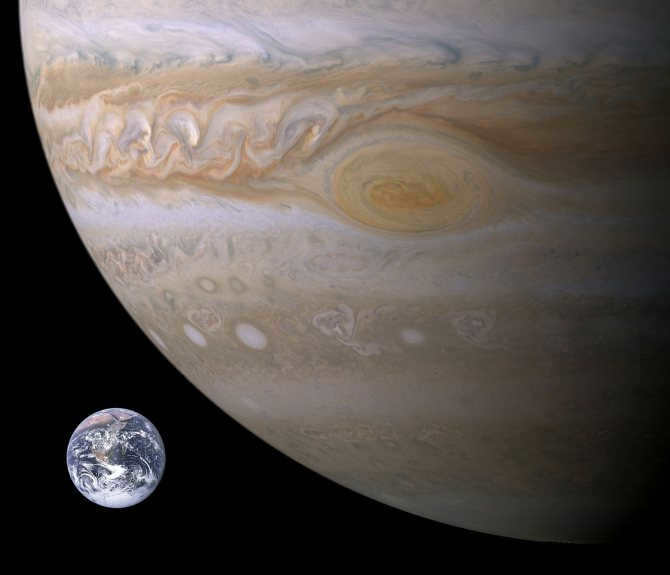
A visual representation showcasing the contrasting sizes of Earth and Jupiter. Image credit: Wikimedia/NASA
UY Scuti: The Largest Star in the Universe
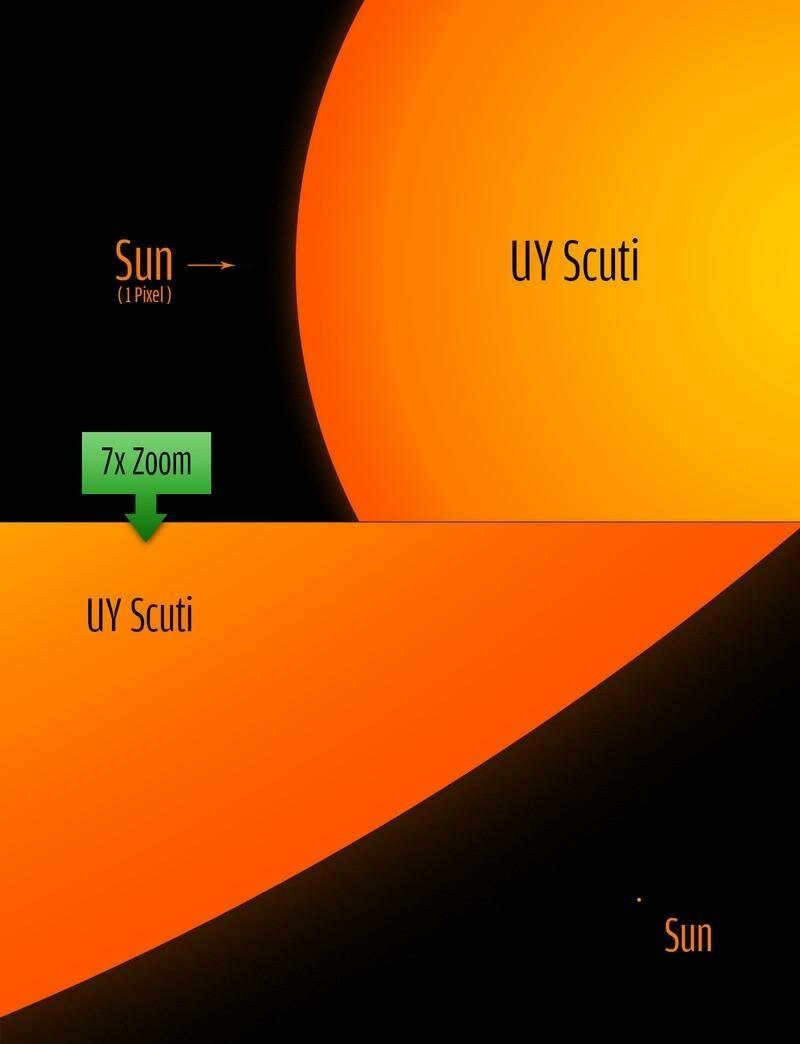
0
View all pictures in the gallery
UY Scuti is an immense star that is classified as a hypergiant. Its radius is 1,700 times bigger than that of the Sun, which makes it the largest star that has been observed in the known universe. If UY Scuti were positioned at the center of our solar system, its outer boundary would extend beyond the orbit of Jupiter, and the streams of gas and dust emanating from its surface would reach even further than the orbit of Pluto, extending to a distance that is 400 times greater than the distance between Earth and the Sun.
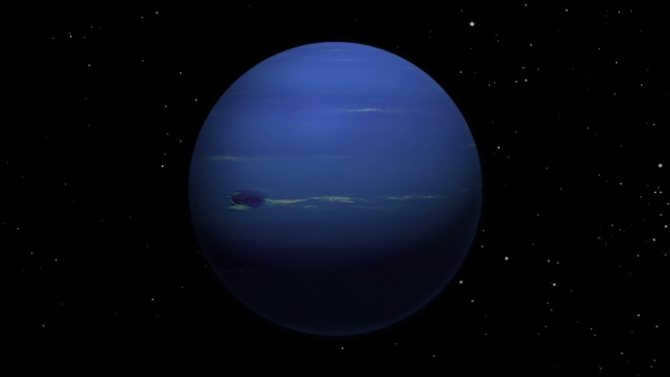
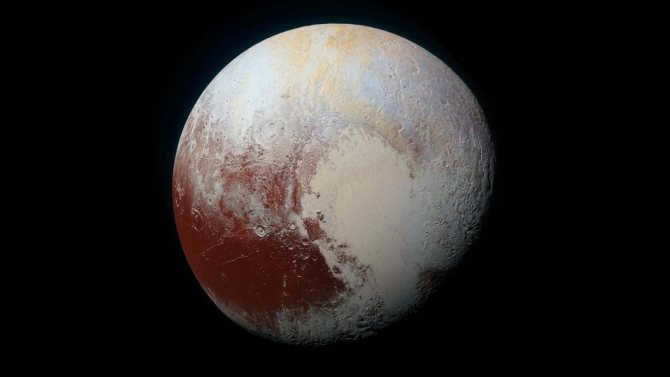
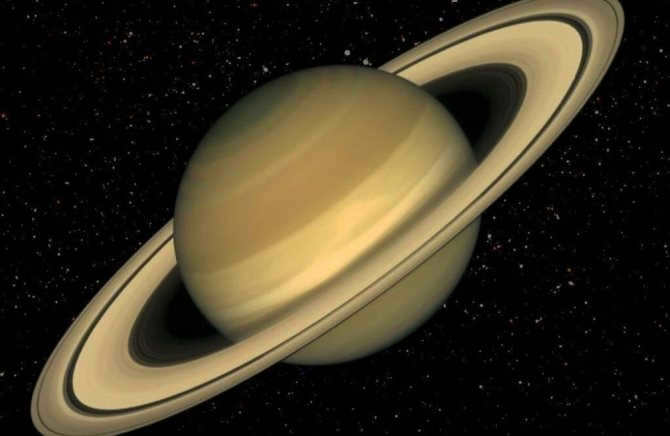
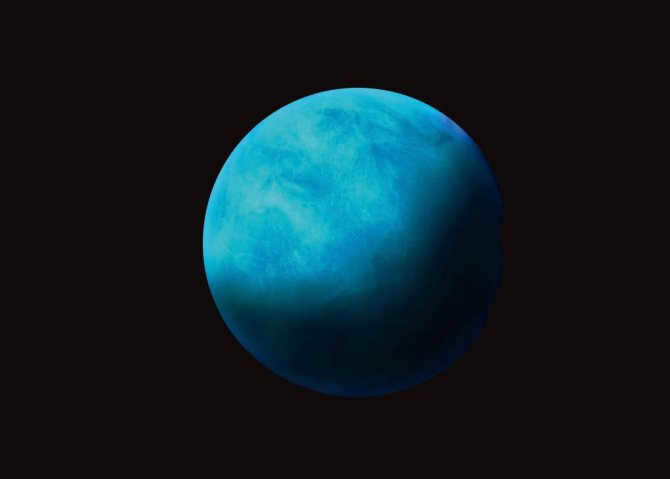
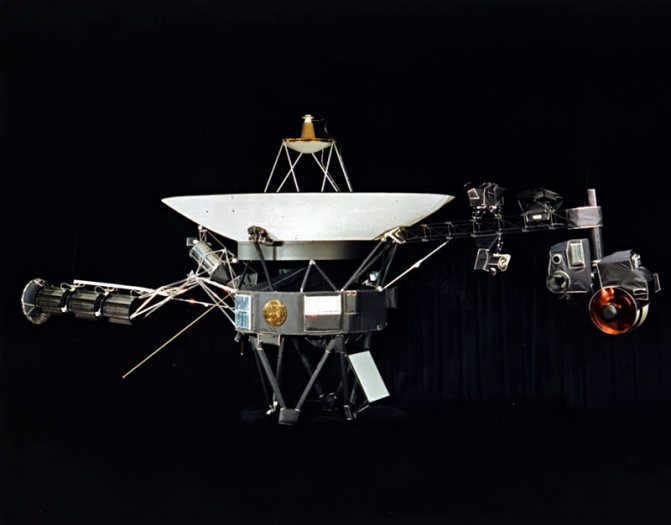
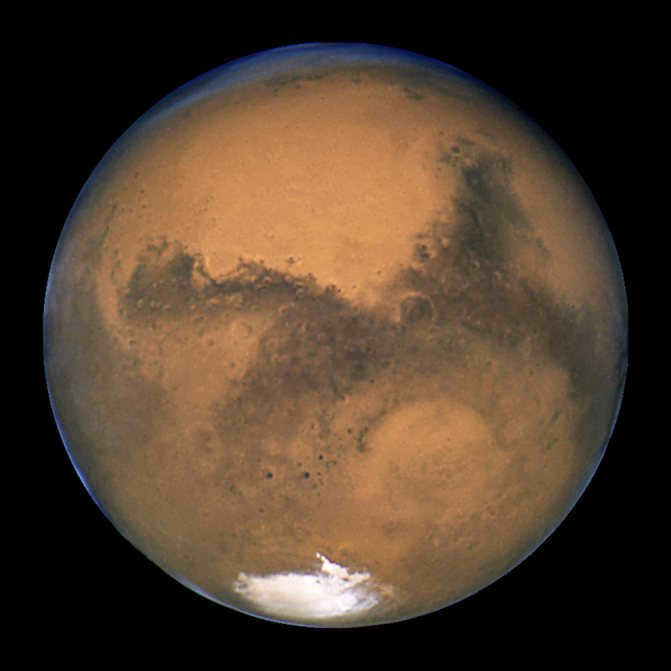
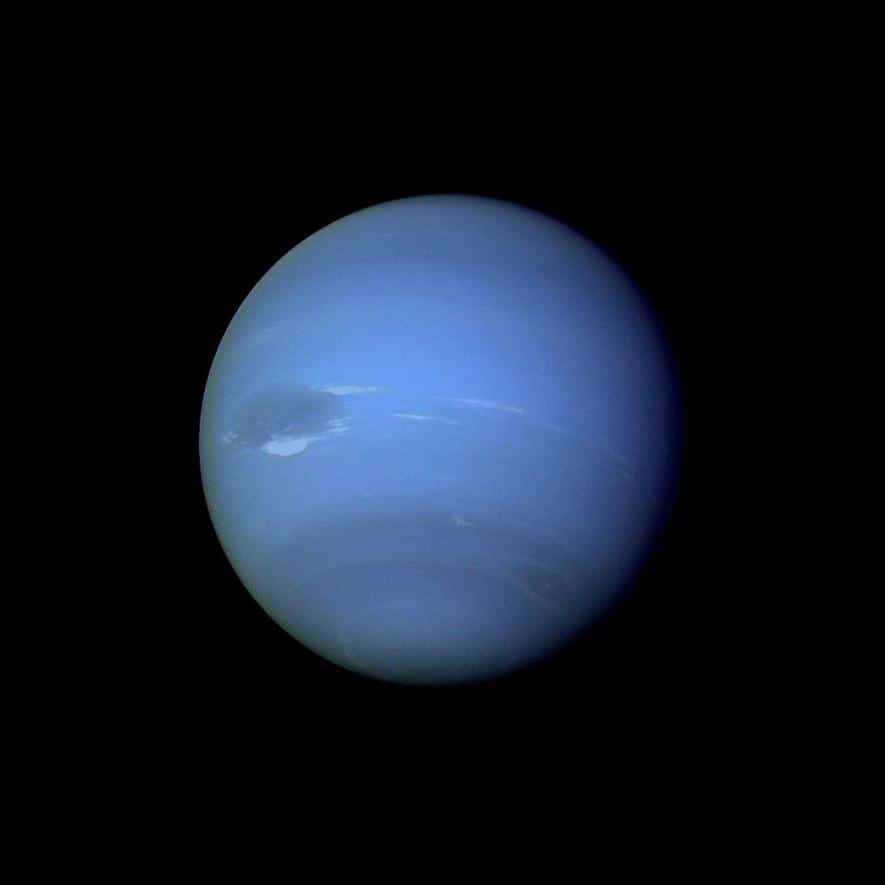
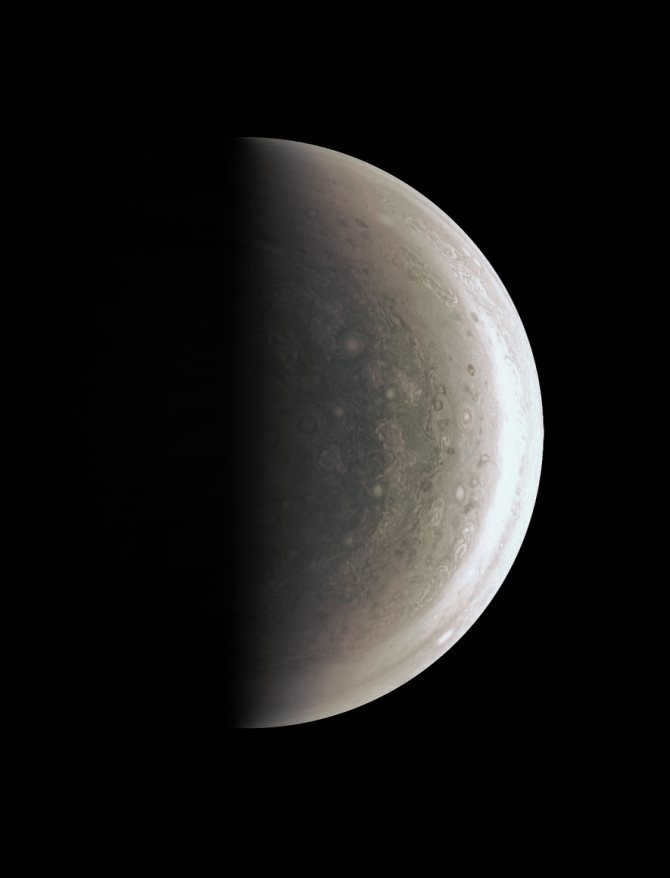
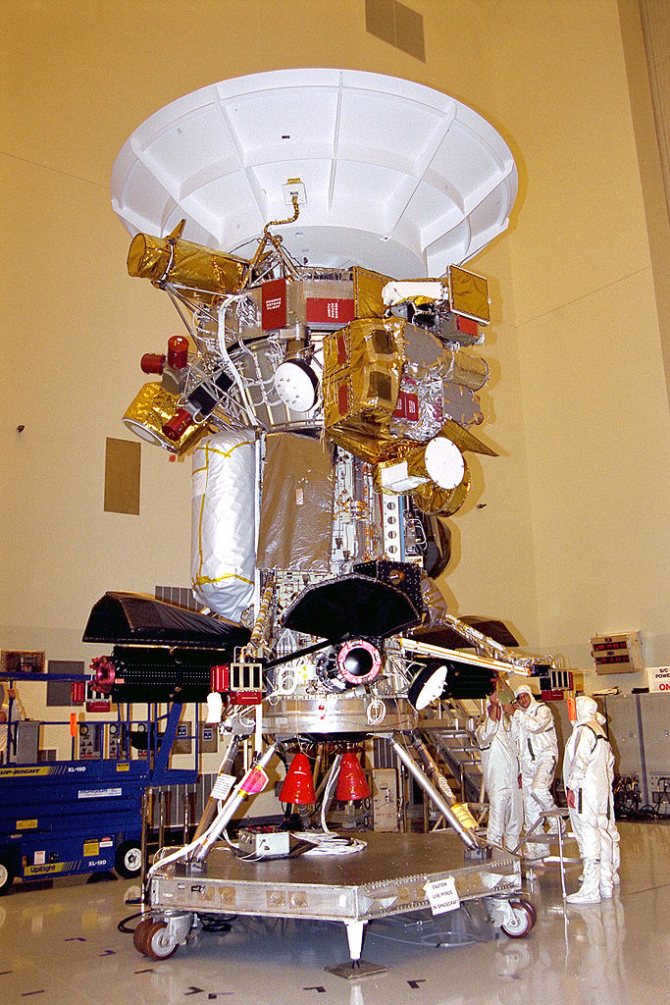
Pluto, which was once known as the ninth planet of the solar system, has undergone a significant change in its classification. Initially, it was believed to be a full-fledged planet. However, in 2006, this viewpoint was challenged and Pluto was reclassified as a dwarf planet.
Interestingly, this reclassification was not a sudden decision. In fact, Soviet scientists had proposed the idea of Pluto being a dwarf planet many years ago, in the mid-20th century. They believed that Pluto was just one of several dwarf planets in our solar system, with it being the largest among them.
It took almost half a century for this hypothesis to be confirmed. Over the years, astronomers made several discoveries in the area where Pluto is located. These findings included the identification of other space objects that were not only more massive than Pluto but also smaller in size.
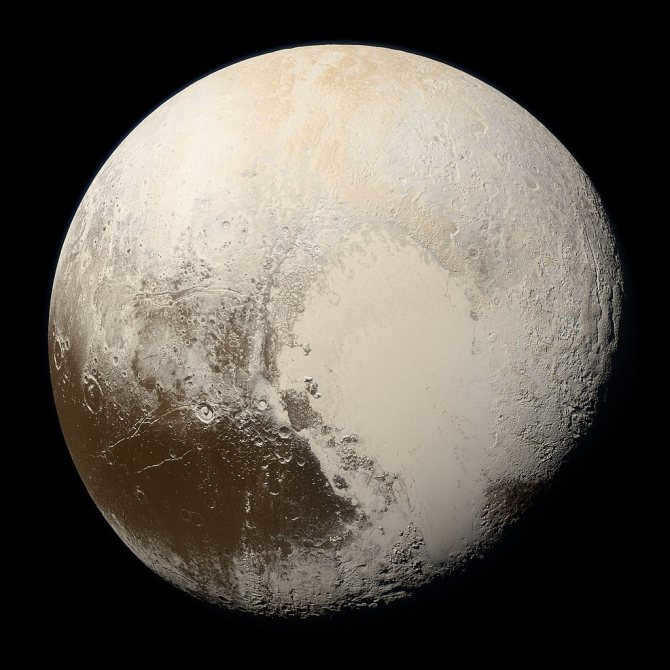
Pluto. Photo: Wikimedia
On August 24, 2006, the International Astronomical Union (IAU) established the first-ever definition of a “planet”. According to this definition, a celestial body that orbits a star must have sufficient mass to assume a spherical shape, as well as the ability to clear its orbit of planetesimals (small celestial bodies that are formed through the gradual accumulation of smaller bodies). Pluto did not meet the criteria outlined in the new definition, and as a result, the IAU reclassified it as a dwarf planet. This decision also affected other celestial bodies that were previously thought to be satellites of the ninth planet, as they too were placed in the category of dwarf planets.
On January 20, 2020, researchers from the California Institute of Technology, Konstantin Batygin and Michael Brown, made an announcement about the potential presence of a ninth planet in the outer regions of our solar system. According to their hypothesis, this celestial body is approximately ten times more massive than Earth and is located beyond the orbit of Pluto, approximately 90 billion kilometers away from the Sun. The astronomers propose that this hypothetical planet completes one revolution around the star every 10,000 to 20,000 years. Currently, it is referred to as “The Ninth Planet” by scientists. Michael Brown stated to The Washington Post, “There is a 90 percent likelihood that it truly exists.”

Michael Brown. Photo: Wikimedia
It is worth mentioning that Brown’s observations played a significant role in the reclassification of Pluto as a dwarf planet, and initially scientists intended to debunk the hypothesis of the existence of the “Ninth Planet.” However, during their research, astronomers reached the opposite conclusion.
“Even though my daughter was hardly born at the time, she still can’t forgive me for the whole Pluto thing,” Michael Brown humorously remarked. “A few years ago, she offered to forgive me if I discovered a new planet for her. So I’m currently working on it to make up for it.”
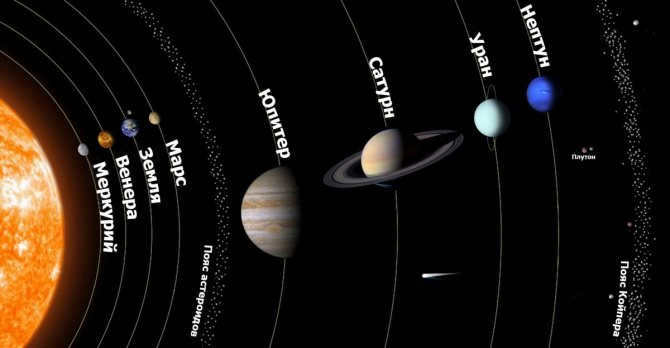
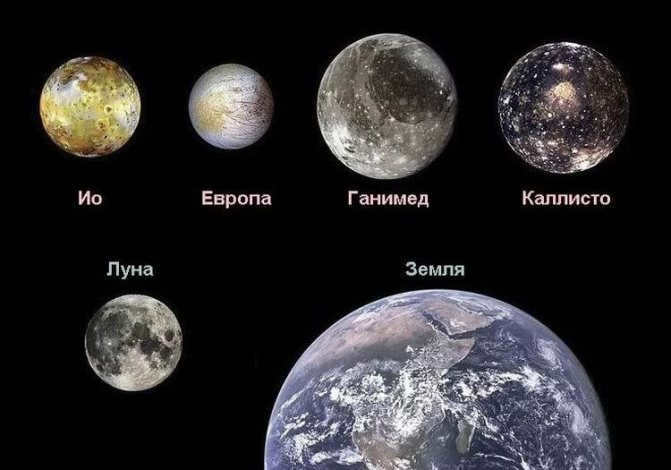
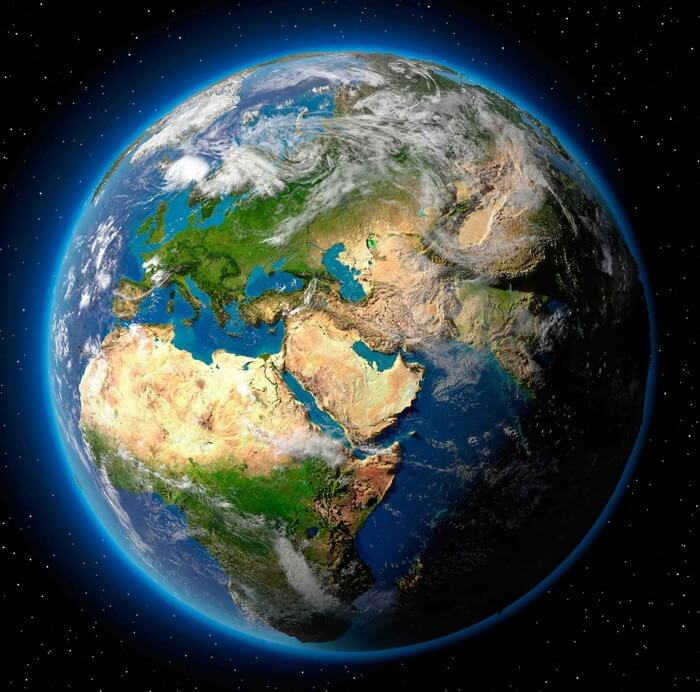
Largest Nebula: The Tarantula Nebula
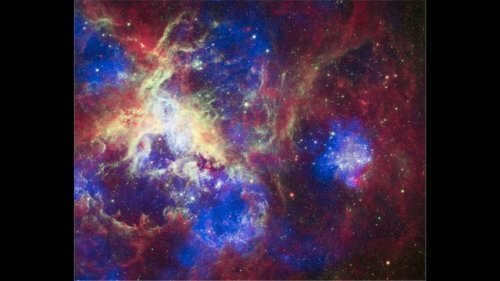

0
The Tarantula Nebula is the largest nebula currently known to us and is the area where the most active processes of star formation occur. The nebula extends for a distance of 1800 light-years at its greatest point. This celestial body, also referred to as 30 Doradus, can be found 170,000 light-years away in the Large Magellanic Cloud, a small galaxy which acts as a satellite to our own Milky Way galaxy.
The largest empty space
Clusters of galaxies are typically gravitationally bound and expand with space and time. However, there are areas in the Universe where there is no arrangement of galaxies. These areas, known as voids, are essentially empty. The largest void in the Universe is called the Volopassus Void. It is located near the Volopassus constellation and has a diameter of approximately 250 million light years. Its distance from Earth is estimated to be around 1 billion light years.
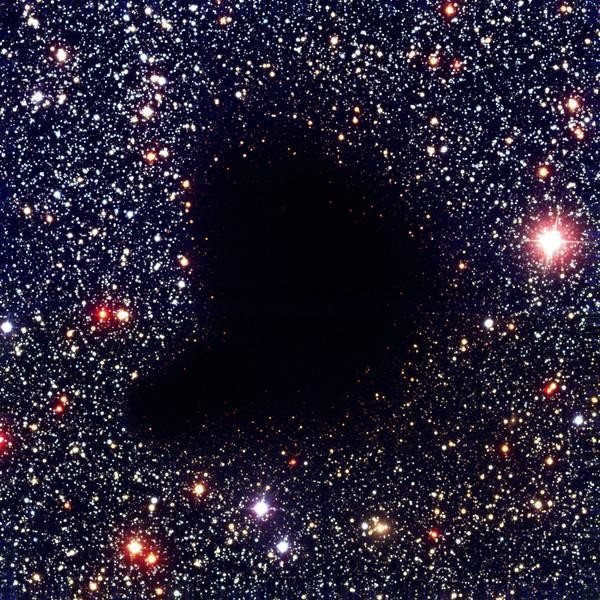
The Eridanus superwidow: a vast expanse of emptiness
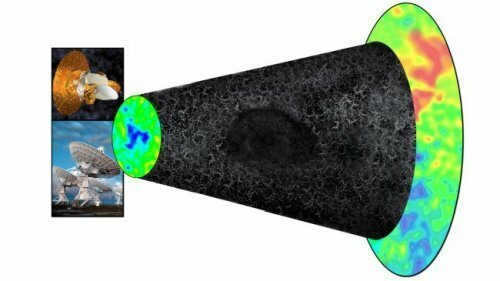
0
In 2004, scientists observed a massive gap in maps created using information gathered by the Wilkinson Microwave Anisotropy Probe (WMAP) satellite. This satellite, with its exceptional sensitivity and resolution, measured the microwave background (a remnant of cosmic radiation from the birth of the universe). The void, which spans 1.8 billion light-years, is completely empty of stars, gas, dust, and possibly even dark matter.
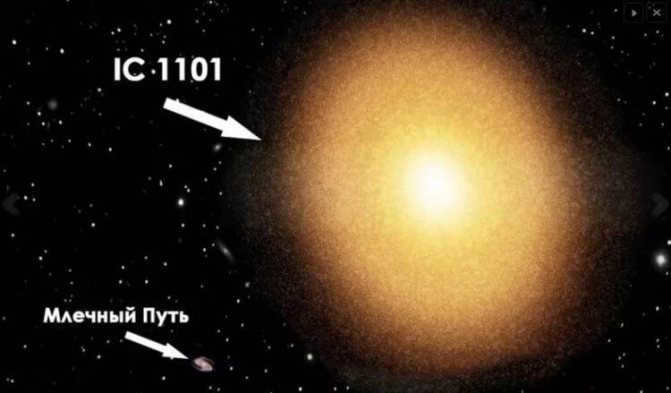
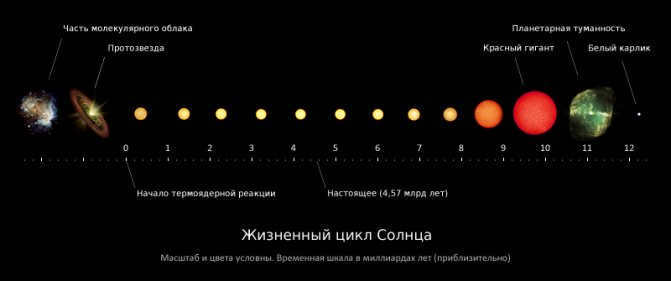
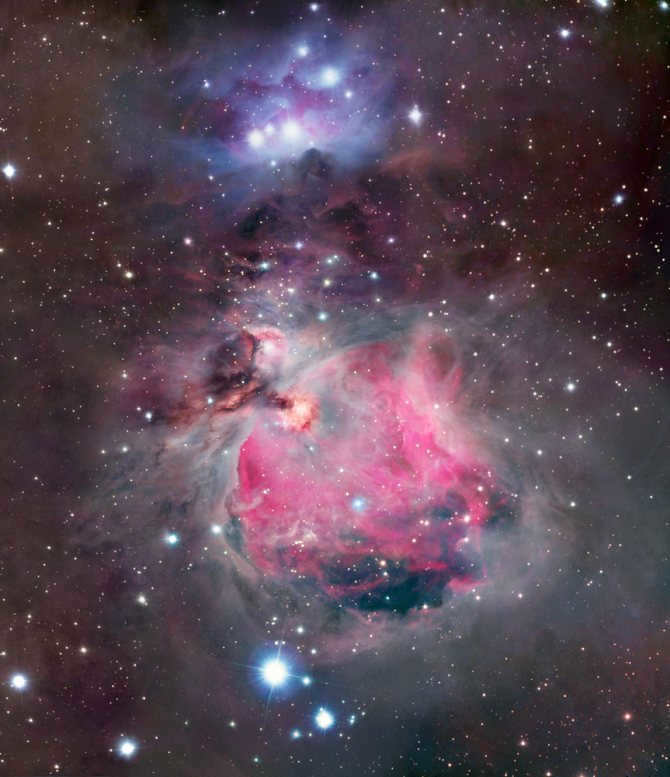
A massive assembly
The Shepley supercluster, situated in the Centauri constellation, stands out as an impressive congregation of galaxies. This colossal structure, tightly bound by the force of gravity, is the largest of its kind. Spanning a staggering distance of 650 million light-years, it captivates observers with its luminous presence.
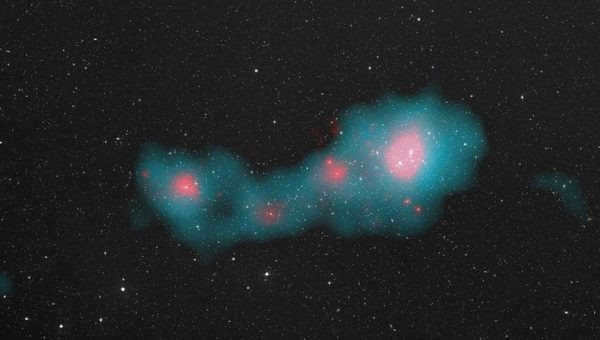
IC 1101: The Enormous Galaxy.
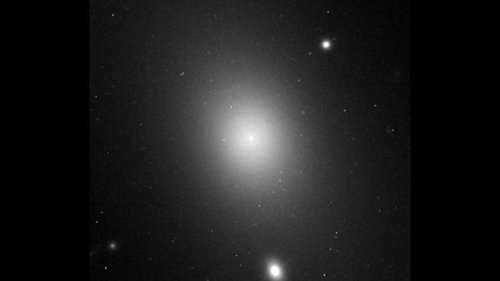
0
The diameter of the Milky Way, our galaxy, is about 100 thousand light-years, which is an average size for spiral galaxies. However, there is a galaxy called 1101 IC that is much larger and more massive than the Milky Way. In fact, galaxy 1101 IC is 50 times bigger and 2 thousand times heavier than our galaxy. It spans a distance of 5.5 million light-years. If we were to replace the Milky Way with this colossal galaxy, its edge would reach the Andromeda galaxy, which is our nearest neighbor on this cosmic scale.
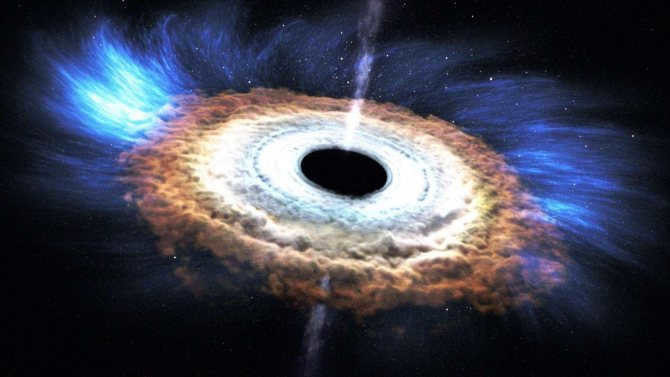
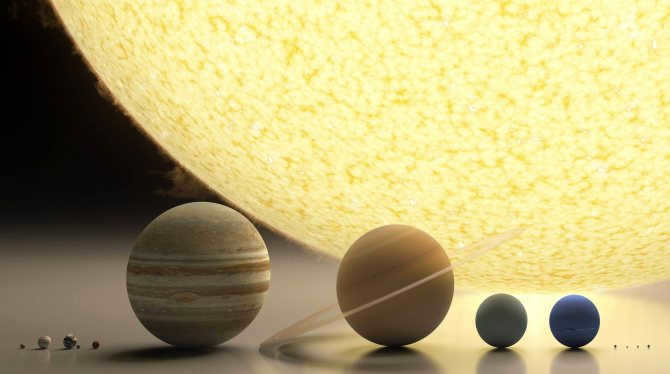
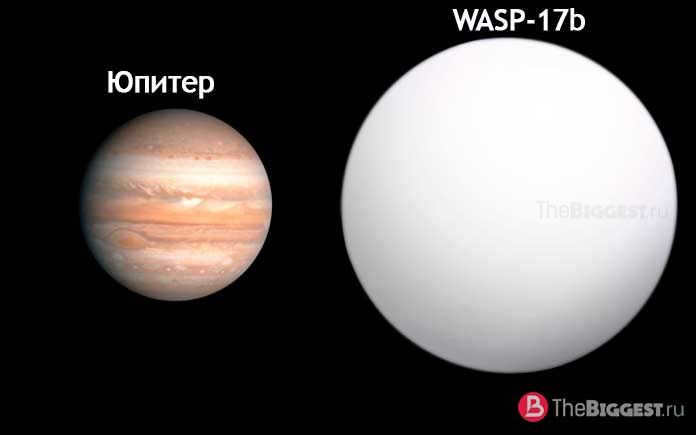
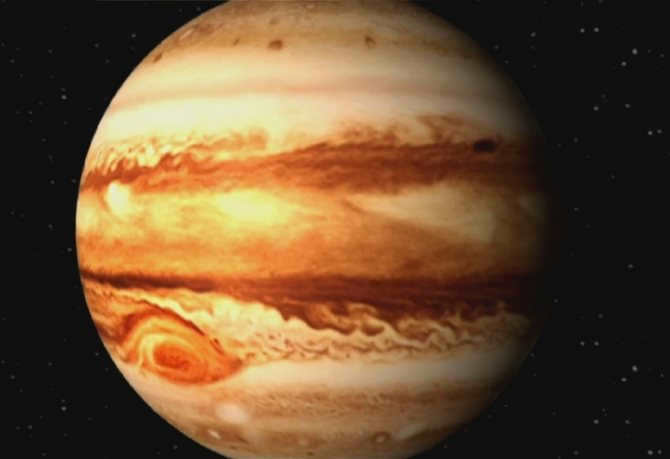
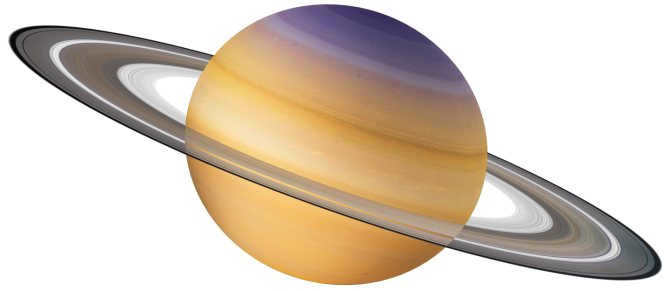
Mars, with a radius of 6780 kilometers
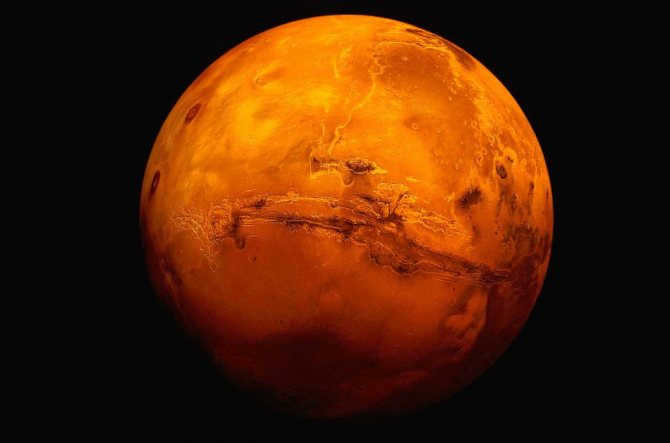
Over the past fifteen years, our knowledge of the condition and evolution of Mars has greatly advanced. The success of various space missions, whether in orbit or on the surface of Mars (such as the Mars Express orbiter, MER Spirit and Opportunity rovers, Mars Reconnaissance Orbiter, Phoenix lander, Curiosity rover, MAVEN orbiter, ExoMars / Trace Gas orbiter, and the recent InSight mission), has significantly propelled our understanding.
With the abundance of new data at our disposal, we are now able to tackle the fundamental questions about our own planet. Mars Express and MRO have improved our comprehension of the planet’s geology, mineralogy, and composition on a large scale, while the MER and Curiosity rovers have provided us with valuable insights into rock samples and their surrounding environments.
TON 618: The Biggest Black Hole Ever Discovered
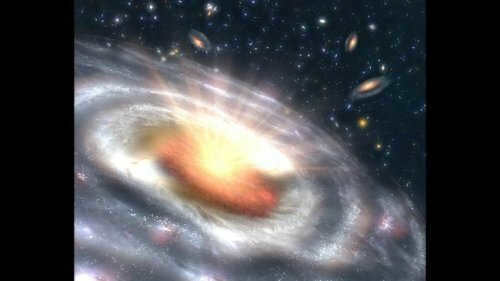
0
Enormous planets orbiting in the central regions of large galaxies may possess masses that are several million times greater than that of the Sun. However, the most massive black hole known as TON 618 has a mass that is 66 billion times greater than that of the Sun. This colossal black hole emerged during the earliest stages of the Universe’s existence and currently fuels one of the most luminous quasars, emitting an unimaginable amount of energy into space in the form of various types of radiation.
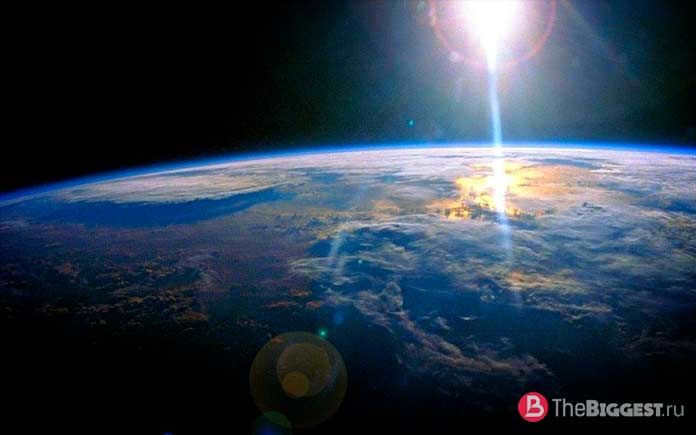
However, astronomers back in the early Middle Ages already answered the question of which planet in the Earth group is the largest by conducting studies on the parameters and characteristics of Earth, Venus, Mars, and Mercury.
Out of this group, Earth holds the undisputed leadership, being perfectly situated in the Goldilocks zone, also known as the habitable zone. If Earth were a little closer to the Sun, water would evaporate, and if it were a little farther away, water would freeze, making life impossible. According to scientific calculations, Earth’s mass is approximately 0.00315 times that of Jupiter.
Today, Earth remains the only known planet in the universe with life. Billions of years ago, oceans formed on the planet’s surface, and it is believed that life originated within their depths.
Fermi Bubbles: The Enormous Galactic Bubbles
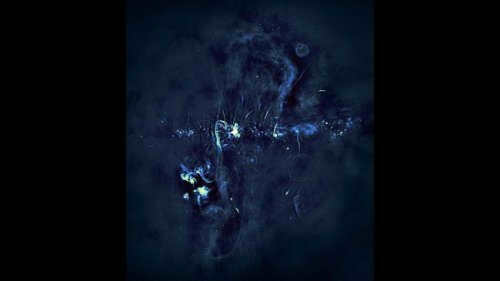
0
In 2010, astronomers using the Fermi space telescope made a remarkable discovery – enormous structures that originated from within the Milky Way. These immense celestial “blobs” can only be seen in specific wavelengths of light and are approximately 25,000 light years in size, which is equivalent to a quarter of the size of our galaxy. According to scientific speculation, these bubbles are the aftermath of an incredibly powerful cosmic event – a massive “energy burp” from our central black hole.
Satellites of Planets in the Solar System: Moon, Ganymede, Io, Deimos, Phobos, and Others
Out of the eight planets in the solar system, six have their own satellites, making a total of 185. The only two planets without any satellites are Mercury and Venus.
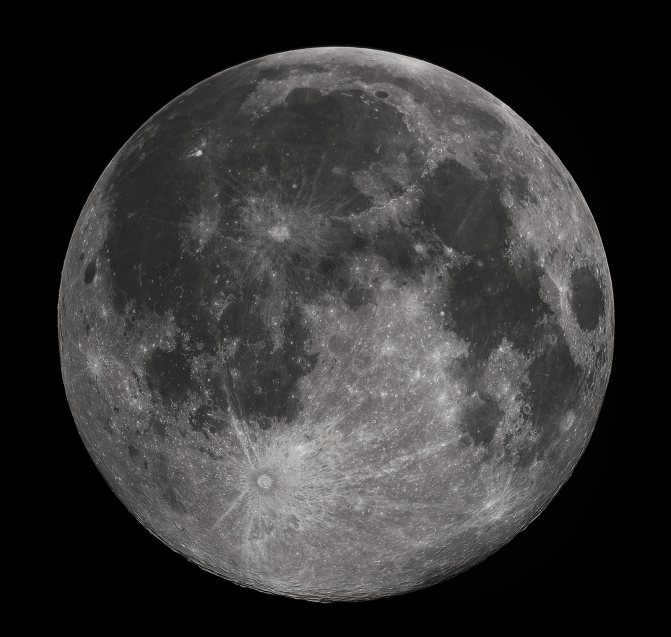
Moon. Photo: Wikimedia
The Moon is the Earth’s only natural satellite. Mars has two satellites, Deimos and Phobos. Jupiter has a total of 79 satellites, with four of them known as the Galilean moons – Io, Europa, Ganymede, and Callisto. These moons were discovered by the famous scientist Galileo in 1609-1610 using the first telescope ever made. Ganymede, the largest moon in the solar system, is even bigger than Mercury.
Saturn currently has 62 satellites, with the first one, Titan, being discovered in 1655 by astronomer Christiaan Huygens. Huygens was inspired by Galileo’s discoveries and designed his own telescope, which allowed him to find the moon. Titan is also comparable in size to Mercury.
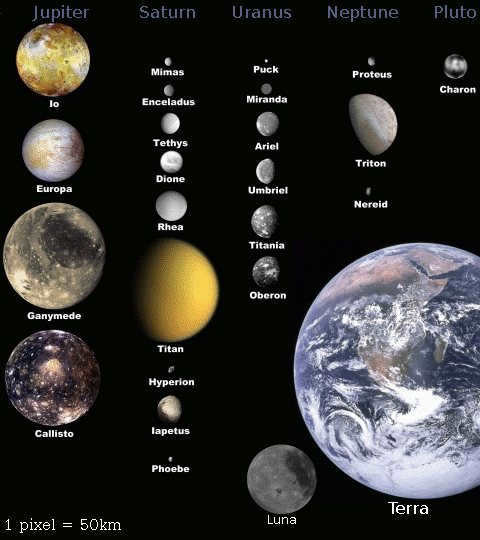
Several satellites can be found in the solar system. Photo: Wikimedia
Titania, the first satellite of Uranus, was discovered by William Herschel six years after the discovery of the planet itself. Currently, Uranus has a total of 27 satellites.
Neptune has 14 known satellites, with the most recent one being Hippocampus. This satellite has a radius of only 8-10 kilometers.
Additionally, some dwarf planets also have their own satellites. For instance, Pluto has five satellites, while Haumea has two. Makemake and Erida each have one satellite as well.
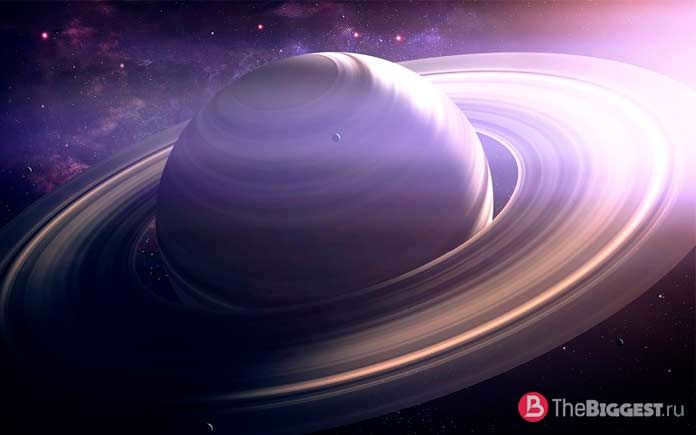
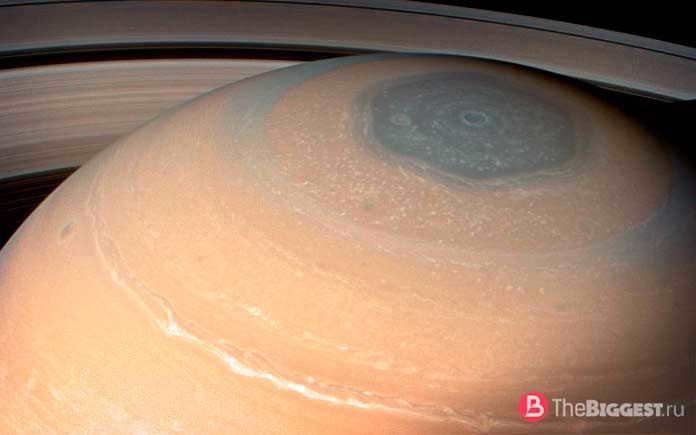
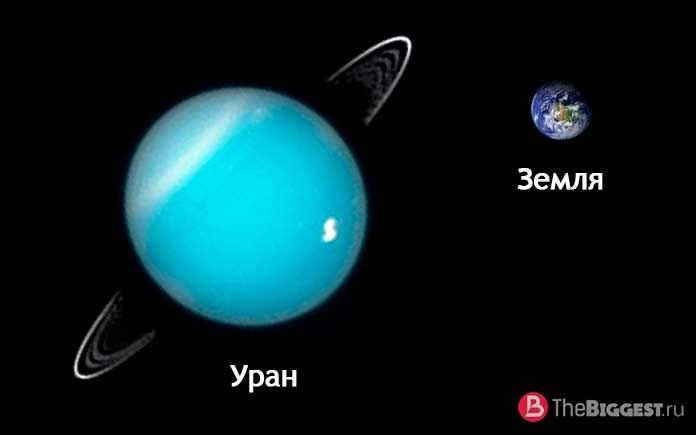
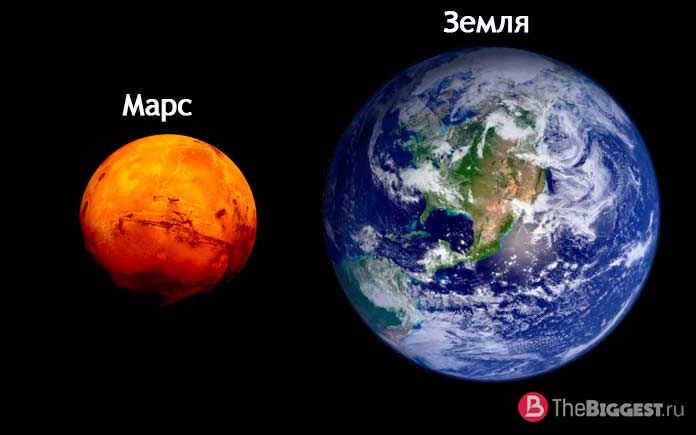
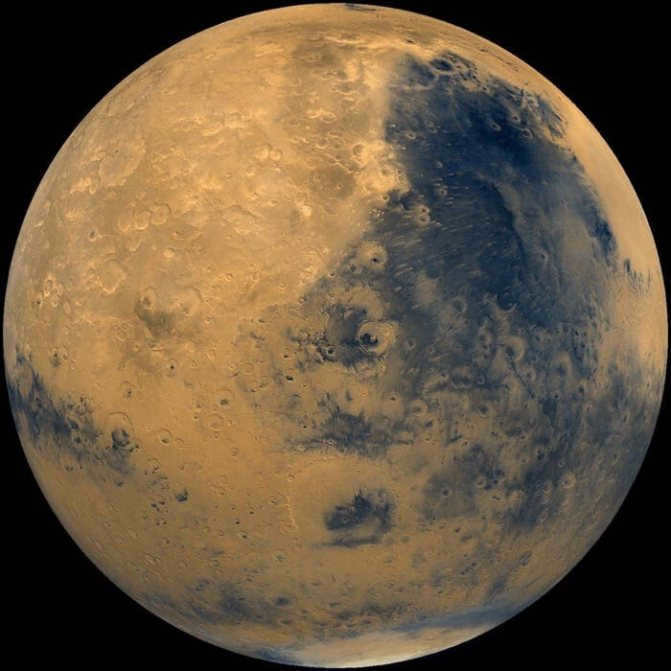
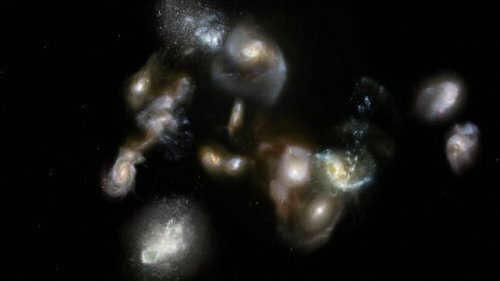
0
During a time when the Universe was just a tenth of its current age, 14 galaxies converged and began colliding due to gravitational forces. This collision resulted in the creation of the protocluster SPT2349-56. The matter from all of these galaxies is densely packed within the protocluster, which occupies a volume merely three times that of the Milky Way. Looking towards the distant future, this cluster of matter will eventually form a solid supergalaxy with a mass equivalent to 10 trillion solar masses. Once this transformation occurs, the central supergalaxy and its 50 satellite galaxies will combine to form a colossal entity known as a galaxy cluster.
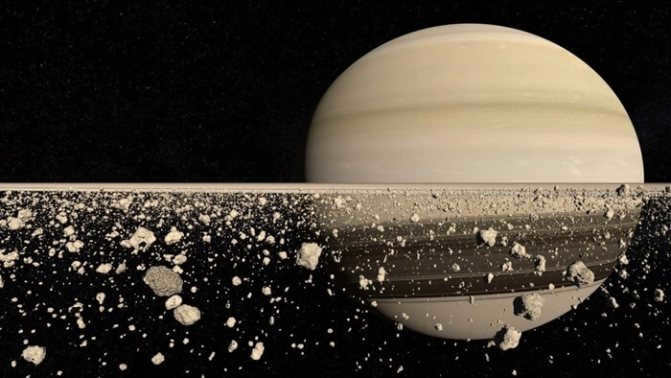
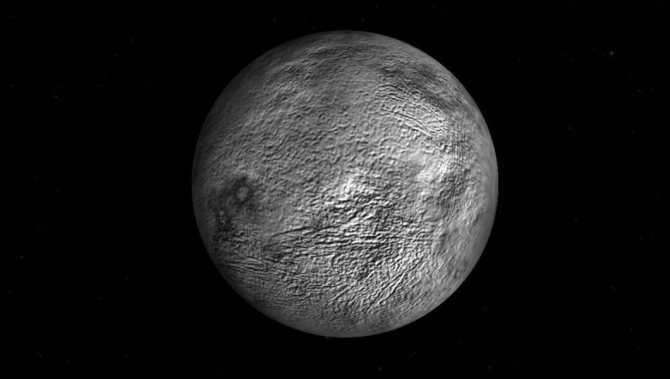
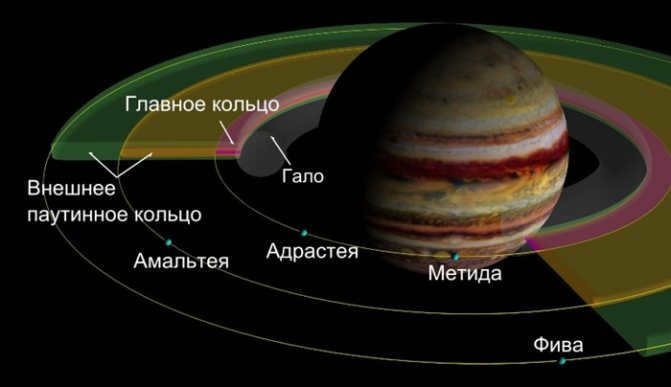
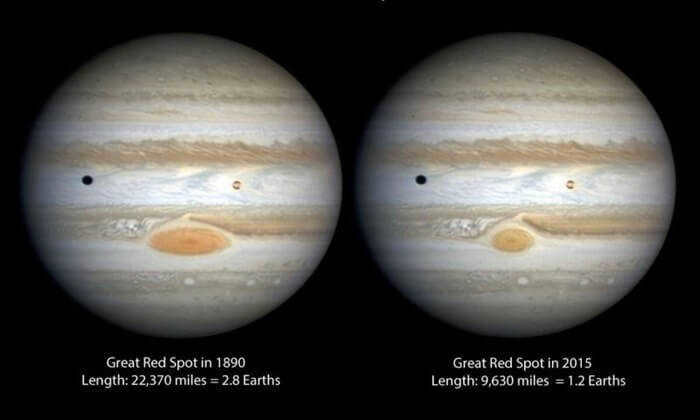
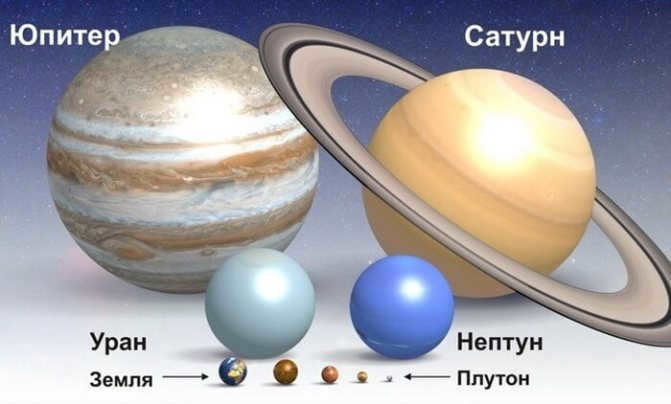
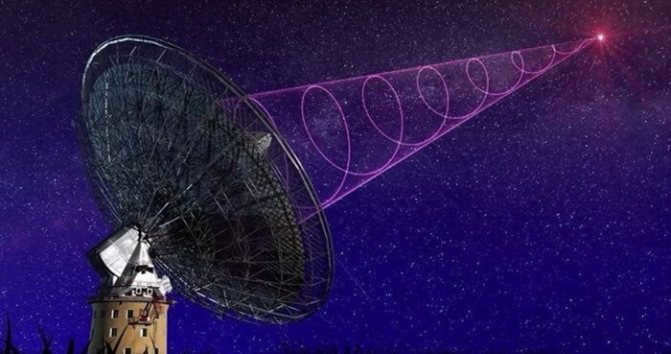
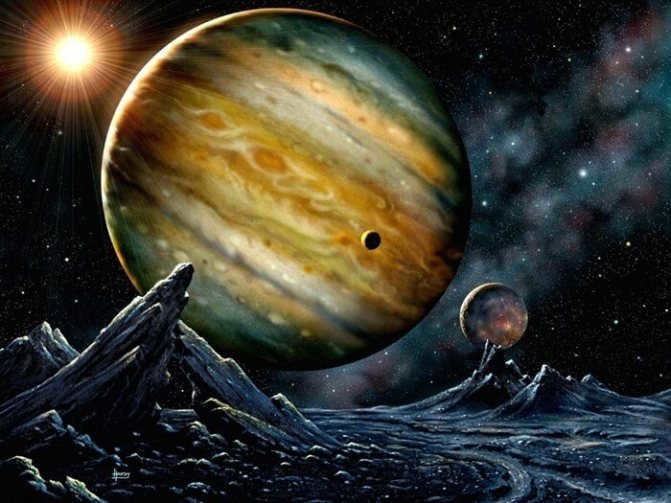
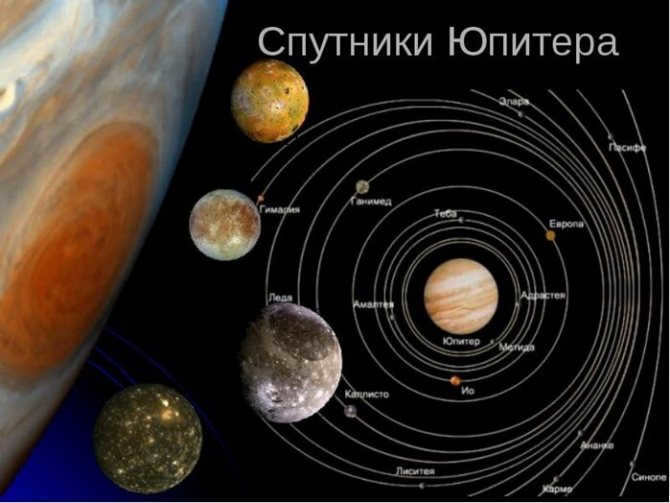
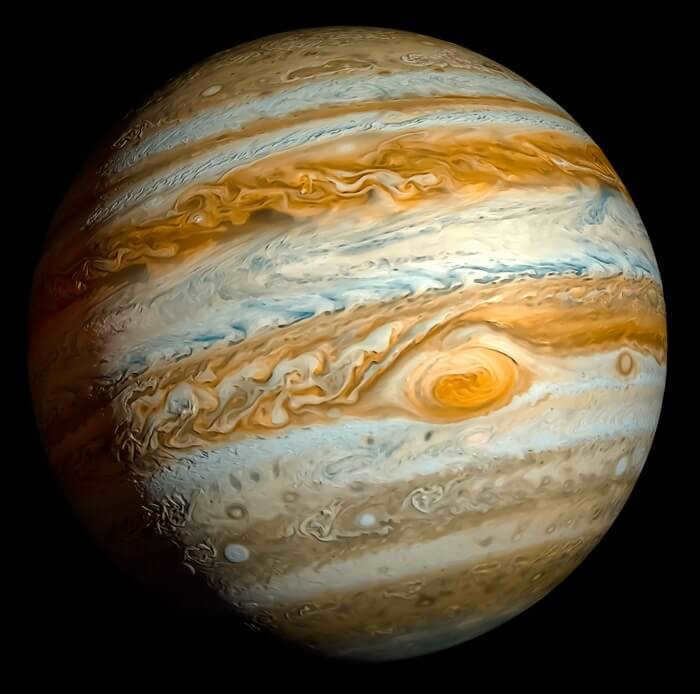
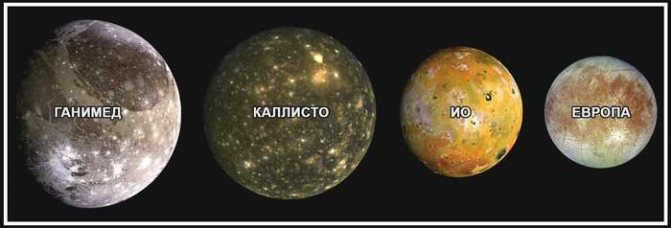
It is possible to envision the existence of numerous Universes simultaneously. A Multiverse, also known as a Multiple Universe, encompasses multiple potential Universes, including our own, which collectively encompass everything that currently exists or could potentially exist. This includes the entirety of space, time, material matter and energy, as well as the physical laws and constants that govern them.

Nevertheless, there is no conclusive evidence to support the notion of other universes coexisting with our own, thus it remains highly probable that our universe stands alone in its uniqueness.
Behold the colossal congregation of galaxies: the Shapley supercluster.
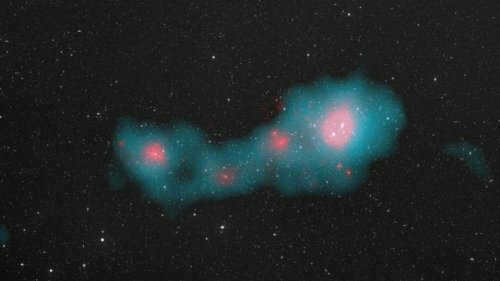
0
In the 1930s, astronomer Harlow Shapley made a groundbreaking discovery – a colossal structure now known as the Shapley supercluster. This supercluster is composed of approximately 8,000 galaxies and has a mass that is 10 million billion times greater than that of the Sun. According to the European Space Agency, the Shapley supercluster is currently the largest single structure in the known part of the universe.
Spanning from 100,000 to 120,000 light-years in diameter.
The Milky Way is a vast spiral galaxy housing anywhere between 200 to 400 billion stars. Orbiting around each of these stars are numerous planets.
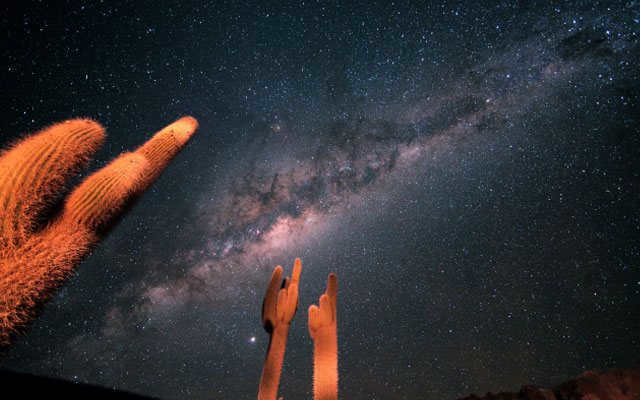
According to certain calculations, there are approximately 10 billion planets located within the habitable zone of their respective parent stars. These planets are situated in regions where all the necessary conditions for the emergence of life, similar to those on Earth, exist.
The Laniakea supercluster: the biggest supercluster.
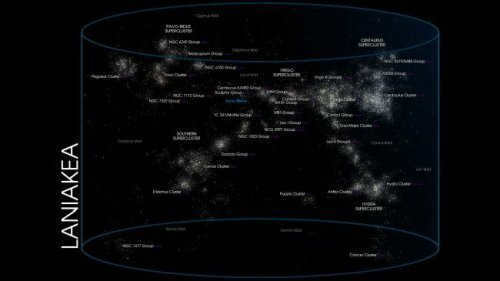
0
Our galaxy, the Milky Way, belongs to a vast collection of galaxies called the Laniakea supercluster. This supercluster is not defined by specific boundaries, and experts in astronomy estimate that it contains over 100,000 galaxies. The Laniakea supercluster stretches across a distance of more than 520 million light-years, and the total mass of all its matter is equal to 100 million billion times the mass of the Sun.
Mercury
Mercury is the closest planet to the Sun in our solar system. It is named after the Roman god Mercury, who was the messenger to the gods. Mercury is a small and rocky planet, similar in size to Earth’s Moon. It has a thin atmosphere and no moons. Mercury has a very long day, taking about 59 Earth days to complete one rotation on its axis. It also has a highly eccentric orbit, meaning its distance from the Sun varies greatly throughout its year. Despite being the closest planet to the Sun, Mercury is not the hottest planet in our solar system. That title goes to Venus, which has a thick atmosphere that traps heat.
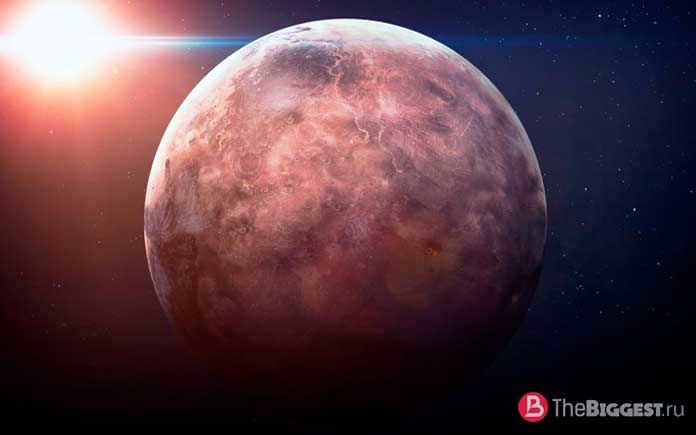
The planet nearest to the Sun, Mercury, has the smallest diameter measuring 4,879 kilometers. It bears a resemblance to Earth’s natural satellite, the Moon, as both have numerous craters and a rocky surface.
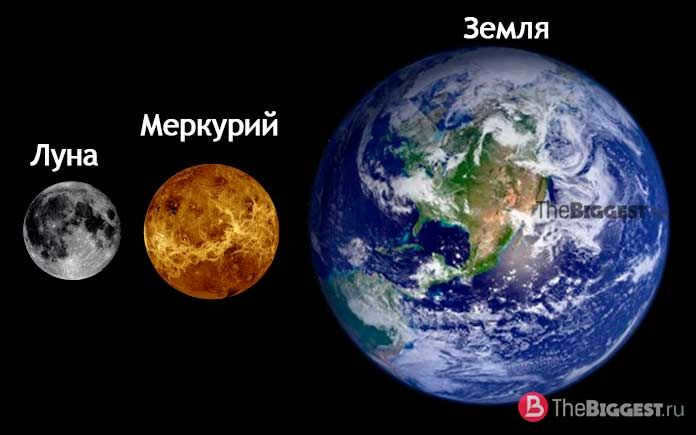
Mercury experiences extreme temperature variations, with the side facing the Sun reaching scorching temperatures of +425 degrees, while plummeting to freezing lows of -175 degrees at night.
Recent research has unveiled the possibility of vast ice formations sprinkled with ash and dust at Mercury’s poles, where the absence of sunlight allows for their accumulation.
Now, let’s dive into the exciting realm of the largest known exoplanets.
Year after year, astronomers continue to discover a multitude of new exoplanets, stars, and other celestial bodies, resulting in a constant evolution of our knowledge. Nonetheless, let’s attempt to gather all available information on the exoplanets that were known at the onset of 2020.
The biggest concentration of quasars: Enormous-LQGs
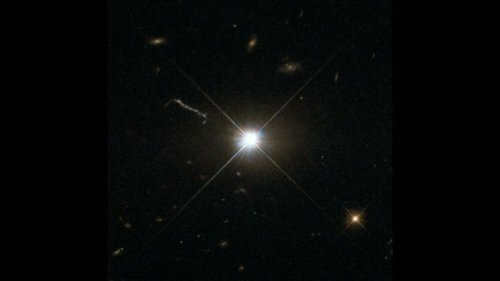
0
Quasars, which are ultra-bright cosmic objects fueled by black holes, are already massive and possess vast amounts of energy. However, there are instances where multiple quasars come together to form a cluster and are held together by the gravitational pull of black holes. The largest cluster of quasars in existence is called the Huge-LQG (Huge Large Quasar Group), and it spans a distance of 4 billion light-years. Within this cluster, there are a total of 73 quasars, and their combined mass is equivalent to 6.1 quintillion (1 with 18 zeros) times that of the Sun.
Venus, with a diameter of 12103.6 kilometers
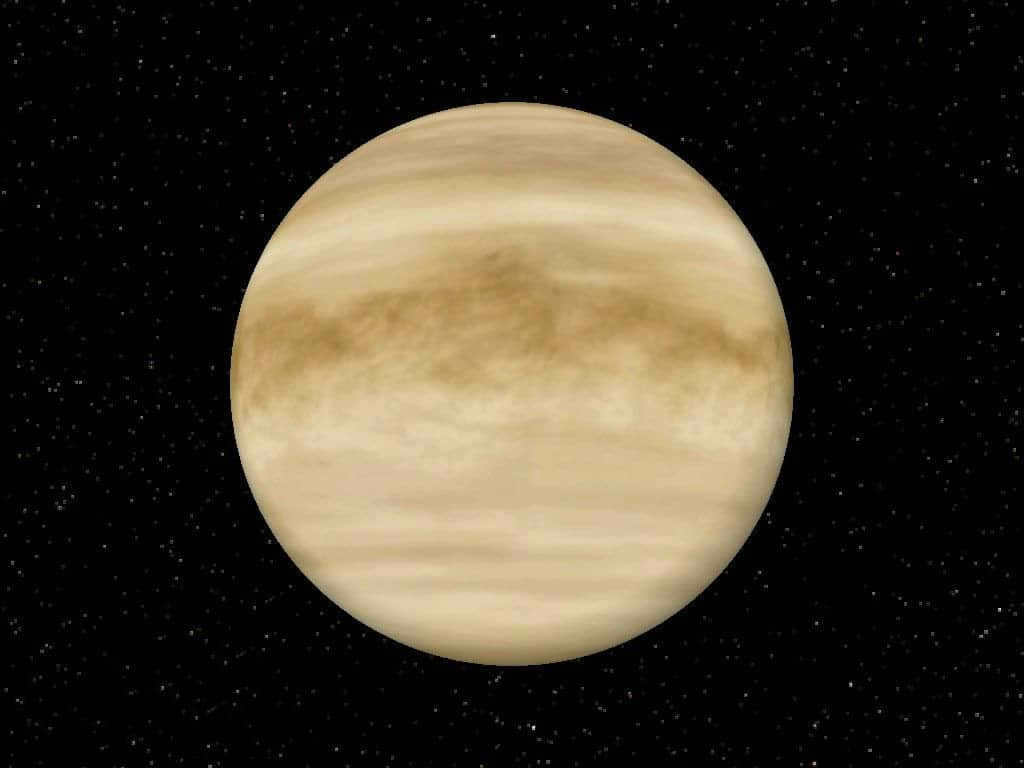
Venus was one of the celestial bodies among a group of five, which were identified as planets by ancient civilizations including the Babylonians, Egyptians, Greeks, Chinese, and Central Americans. This planet, also known as Ishtar by the Babylonians, was observed and documented for centuries before the invention of advanced astronomical instruments.
Throughout history, the appearance and movements of Venus were closely monitored and recorded by astronomers from various cultures. However, it was not until 1610 when Galileo made the first accurate observation of Venus, thanks to the advancements in telescopic technology.
The Hercules-Corona Borealis Great Wall: the Largest Object in the Universe
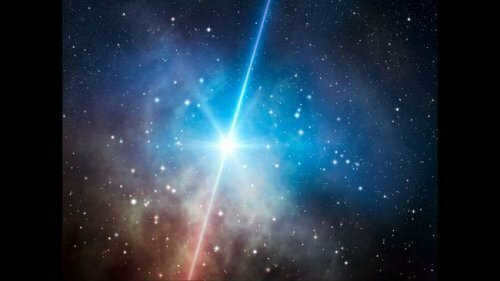
0
By analyzing the position of the origins of gamma ray bursts, which are powerful cosmic explosions that mark the end of a star’s life cycle, scientists have made a groundbreaking discovery – the Hercules-Corona Borealis Great Wall. This colossal entity spans a staggering 10 billion light years and is home to billions of galaxies. Named the “Great Wall”, this awe-inspiring structure was first uncovered in 2013 when astronomers observed a concentration of gamma-ray bursts spanning a 10 billion light-year region in the direction of the Hercules constellation and the Northern Corona Borealis.
Not only do some planets have satellites, but they also possess rings. For over three centuries, it was widely believed that Saturn was the sole planet with this feature. Nevertheless, this assumption has been proven false, as rings have been discovered encircling Uranus, Jupiter, and Neptune as well.
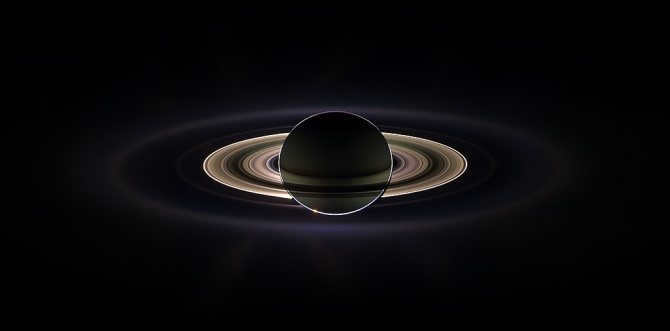
Saturn’s Sun eclipse as captured by the Cassini spacecraft. Image source: Wikimedia
The discovery of Saturn’s ring system is credited to Galileo Galilei, who first observed it, and Dutch astronomer Christiaan Huygens, who provided a detailed description. Huygens wrote, “The ring is a thin, flat structure that encircles Saturn, with no points of contact and inclined to the ecliptic plane.”
Research has revealed that Saturn’s rings are primarily composed of water ice and tiny particles of dust. Subsequent investigations have shown that the number of rings surrounding Saturn is in the hundreds.
In 1921, there was speculation that Saturn had lost its rings, with the particles dispersing into space. This belief arose from the observation that the rings appeared edge-on from Earth, making them difficult to detect with the instruments available at the time due to their thinness.
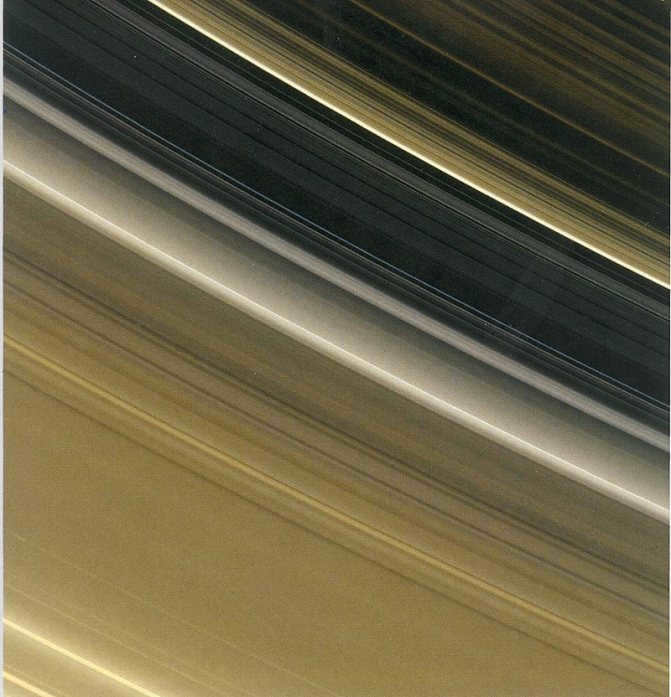
Rings of Saturn. Photo by the Cassini interplanetary station. Wikimedia
In 1977, a group of American scientists made the remarkable discovery of nine rings encircling Uranus, although the initial speculations about their existence were put forth by the planet’s discoverer, William Herschel. In 1986, Voyager 2 detected two additional rings around Uranus, and the Hubble telescope, in a series of observations between 2003 and 2005, unveiled a pair of rings.
The presence of rings around Jupiter was first theorized in 1960 by Soviet astronomer Sergei Vsekhsvyatsky, and in 1979, they were indeed observed when the Voyager 1 spacecraft approached the planet. A decade later, Voyager 2, the spacecraft’s twin, made the stunning discovery of rings around Neptune.
In October 2020, an orbit of particles was found encircling the small celestial body Haumea. Similarly, it was once believed that Pluto possessed a collection of rings around it, but the absence of such rings was confirmed by the New Horizons probe in 2020.
The Biggest Exoplanet: GQ Lupi b
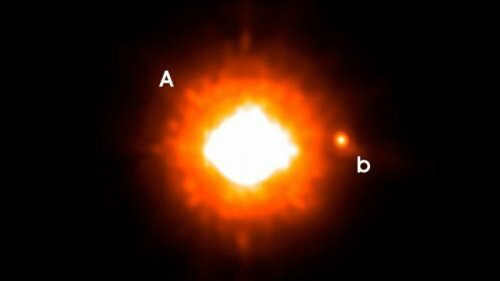
0
After the discovery of GQ Lupi b in 2005, astronomers were initially unsure of its true nature. This celestial body revolves around a massive young star in an orbit that is 2.5 times larger than the distance from the Sun to Pluto. Initially, scientists believed it to be a brown dwarf, a small star that has not undergone fusion. However, further observations revealed that GQ Lupi b is actually a planet, with a diameter 3.5 times that of Jupiter. As a result, GQ Lupi b currently holds the title of the largest known exoplanet to date.

